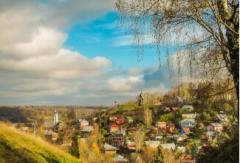Main monasteries of Russia
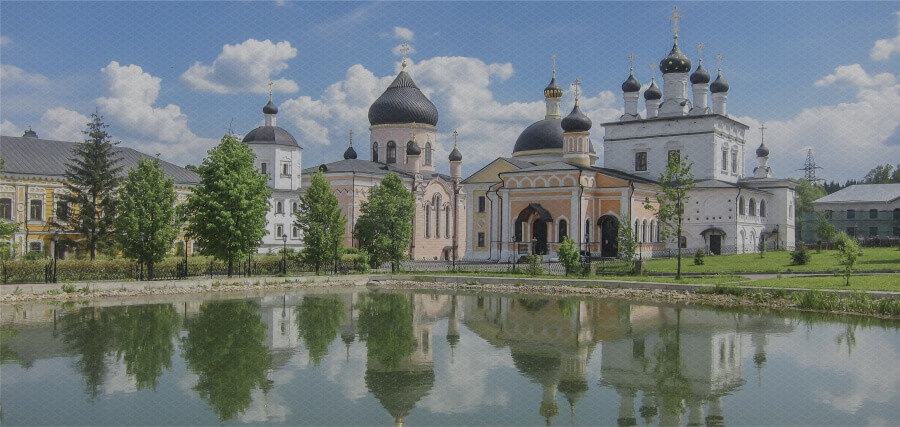
LONG LIST OF THE MOST IMPORTANT MONASTERIES AND CONVENTS IN RUSSIA
► Russia in lists ► List of most important monasteries in Russia

Some of the most beautiful sights in Russia are its Orthodox monasteries and convents due to their wonderful buildings and the key role they played in Russian history. The first monasteries in Russia were founded in the late 11th century, often serving as defensive structure and centres for learning. Most large cities have a monastery or convent, although they are predominantly found in the Central and North-Western federal districts - which make up the historical core of Russia. Some of the best preserved examples are found in the Russian North, including the famous island monasteries of Lake Ladoga and the White Sea.
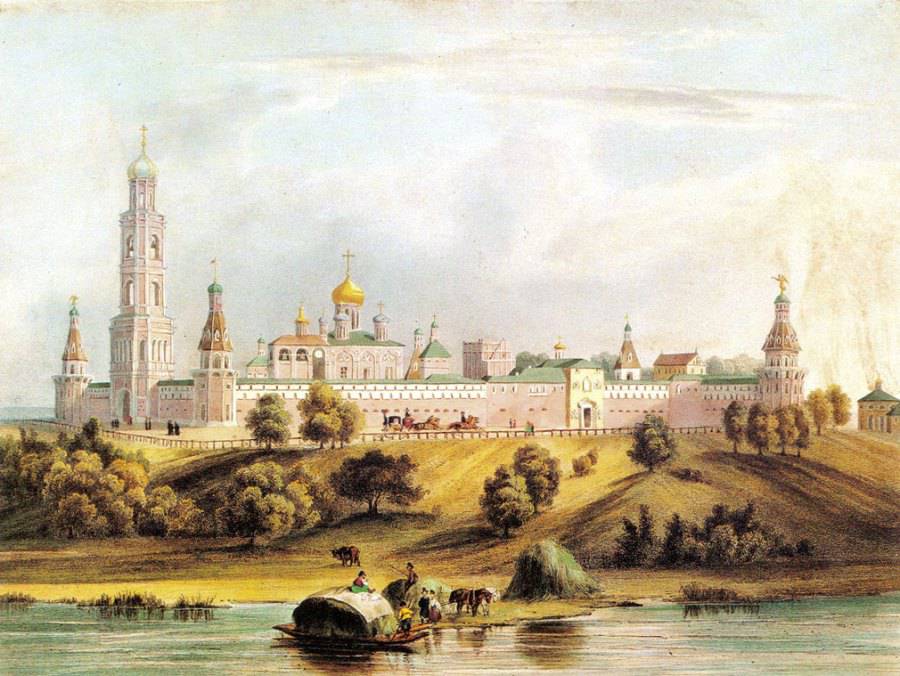
Most monasteries share a similar history: founded by a prince or saint, developed into a spiritual centre, turned into a place of pilgrimage, sacked by the Polish or Swedes during the Time of Troubles or the French during the Napoleonic Wars (depending on the location), closed by the Bolsheviks and subsequently turned into a museum, at best, or a prison, at worst, and finally reopened and restored following the revival of the Russian Orthodox Church after the fall of the Soviet Union.
We have selected some of the our favourite monasteries and convents, taking into account their architectural value or historic significance.
• NORTH-WESTERN FEDERAL DISTRICT •
CENTRAL FEDERAL DISTRICT
Kholkovsky Monastery - Kholki, Belgorod Region

This is monastery is special as it is a cave monastery. It is located among chalk hills where it is believed Prince Igor Svyatoslavich of Novgorod-Seversk (the main hero of the medieval The Tale of Igor’s Campaign) met with his brother Vsevolod before heading out against the Polovtsians in 1185. It is not known for certain when the caves were dug or when the monastery was founded, only that a monastery dedicated to the Holy Trinity was first mentioned in texts in 1620. The main underground church has an exquisite Gzhel ceramic iconostasis, as wood would quickly decay in the high humidity.
Svensky Monastery - Suponevo, Bryansk Region
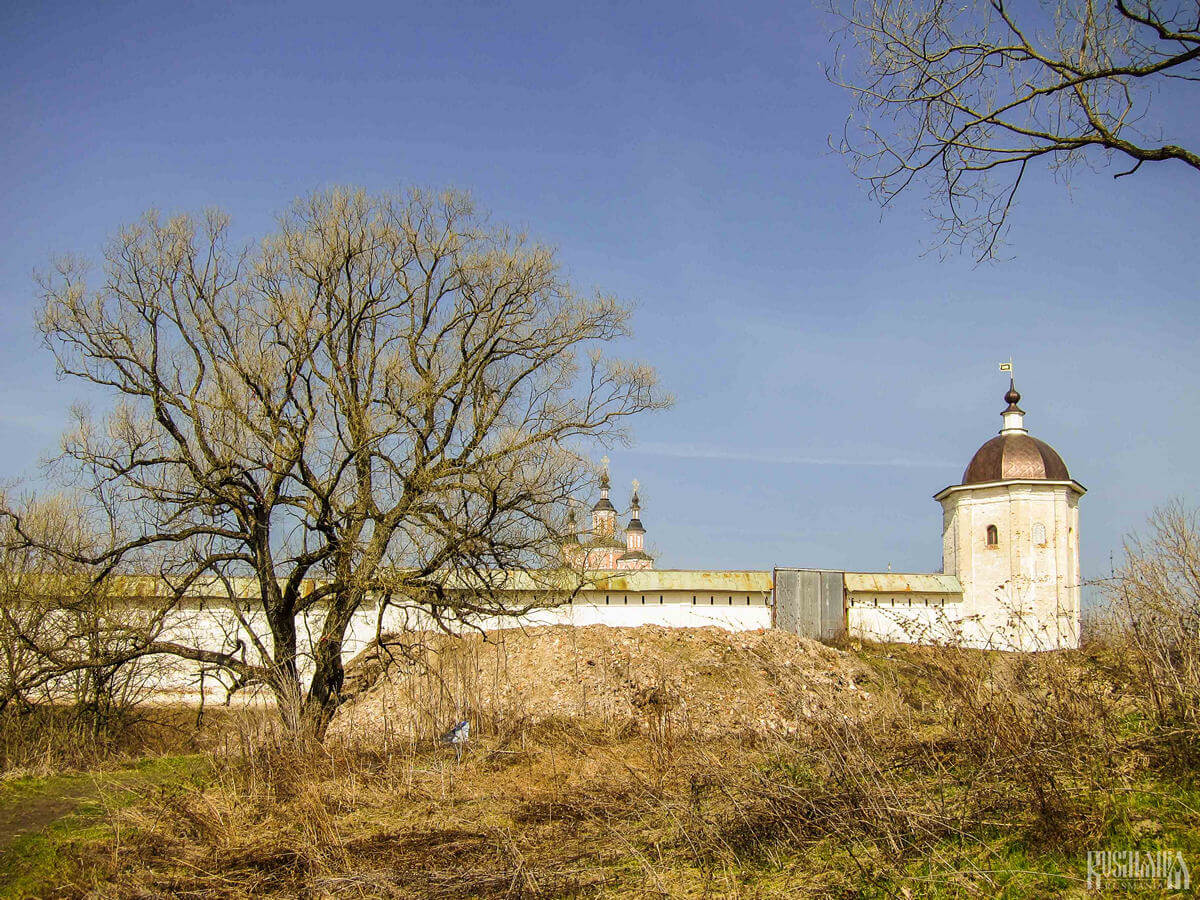
According to legend the Svensky Monastery was founded on the River Sven in 1288 following miraculous events involving the Our Lady of the Kiev Caves Icon, which was credited with saving Prince Roman Mikhailovich of Bryansk’s eyesight. Its impressive walls survived the Soviet era, but many of its buildings were destroyed and rebuilt after the monastery was reopened.
Pafnutievo-Borovsky Monastery - Borovsk, Kaluga Region
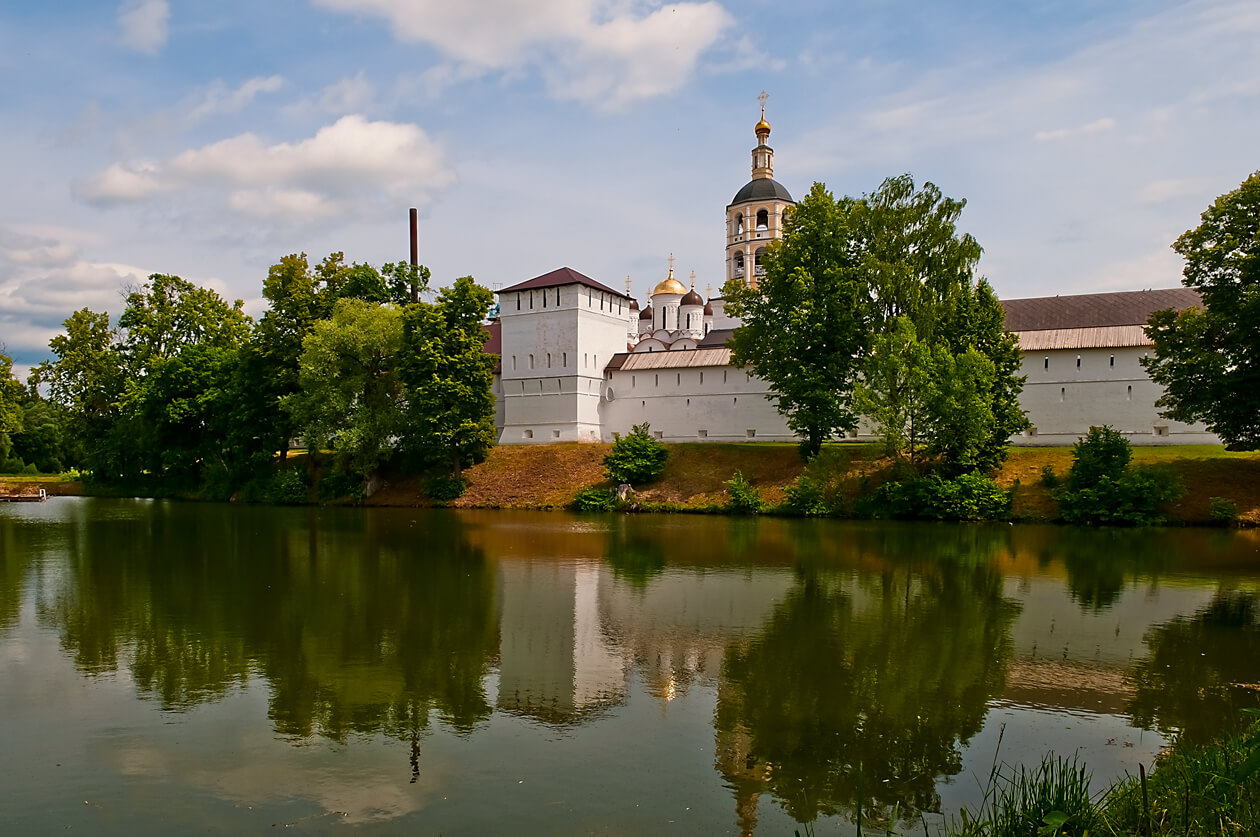
The Pafnutievo-Borovsky Monastery was founded in 1444 by St Pafnuty of Borovsk, but most of its buildings date from the 16th century and were built on the orders of Tsar Feodor I. It later became associated with the Old-Believers as prominent Old-Believers Avvakum, Feodosia Morozova and Yevdokia Urusova were imprisoned here.
Optina Hermitage - Kozelsk, Kaluga Region
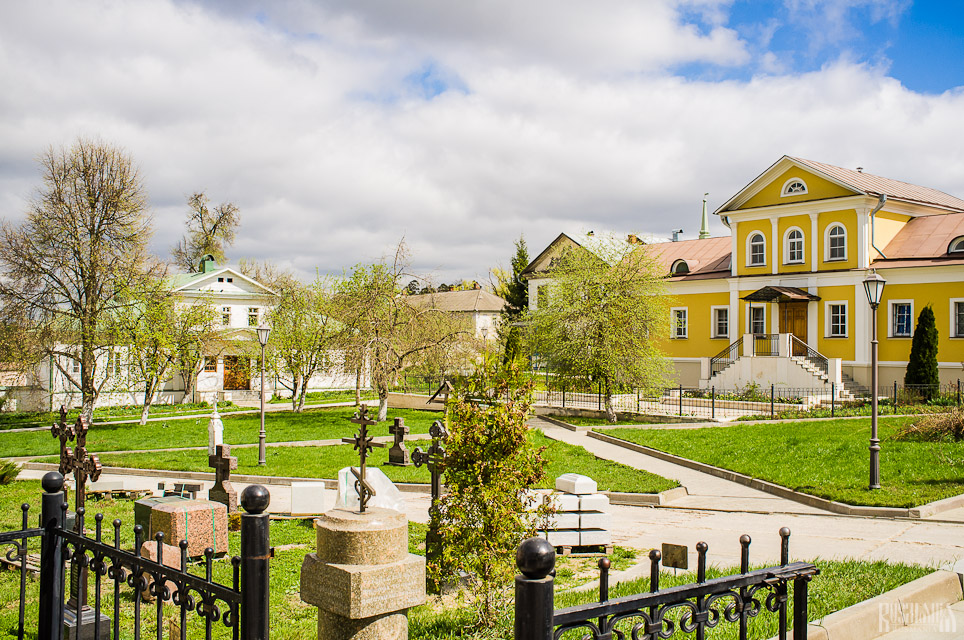
It is believed that the Optina Hermitage was founded in the 15th century, according to one theory by a repentant robber by the name of Opt. It gained fame as a site of pilgrimage in the 19th century when it became a centre of Russian staretsdom - the practice of elders offering advice and wisdom for those seeking it. Famous visitors included Nikolai Gogol, Lev Tolstoy and Fyodor Dostoevsky, who took inspiration from the visit when writing The Brothers Karamazov. Its location just outside the city of Kozelsk in a forest makes it especially picturesque.
Tikhonova Uspenskaya Hermitage - Selo Lva Tolstogo, Kaluga Region
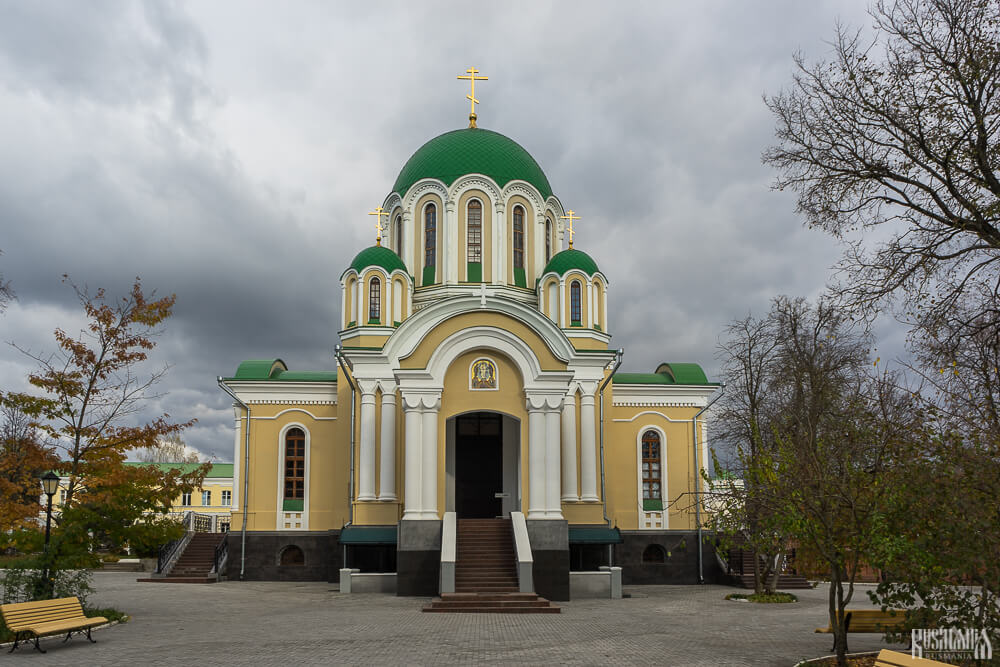
In 1485 the monk who is now known as St Tikhon of Medyn founded this hermitage on the high bank of the River Ugra close to where the Great Stand-Off took place in 1480 which saw Russia freeing itself of the Tatar Yoke. Since reopening, its early 20th-century buildings have been fully restored or rebuilt and a nearby skete has been opened on the supposed site of the famous stand-off.
Ipatievsky Monastery - Kostroma, Kostroma Region
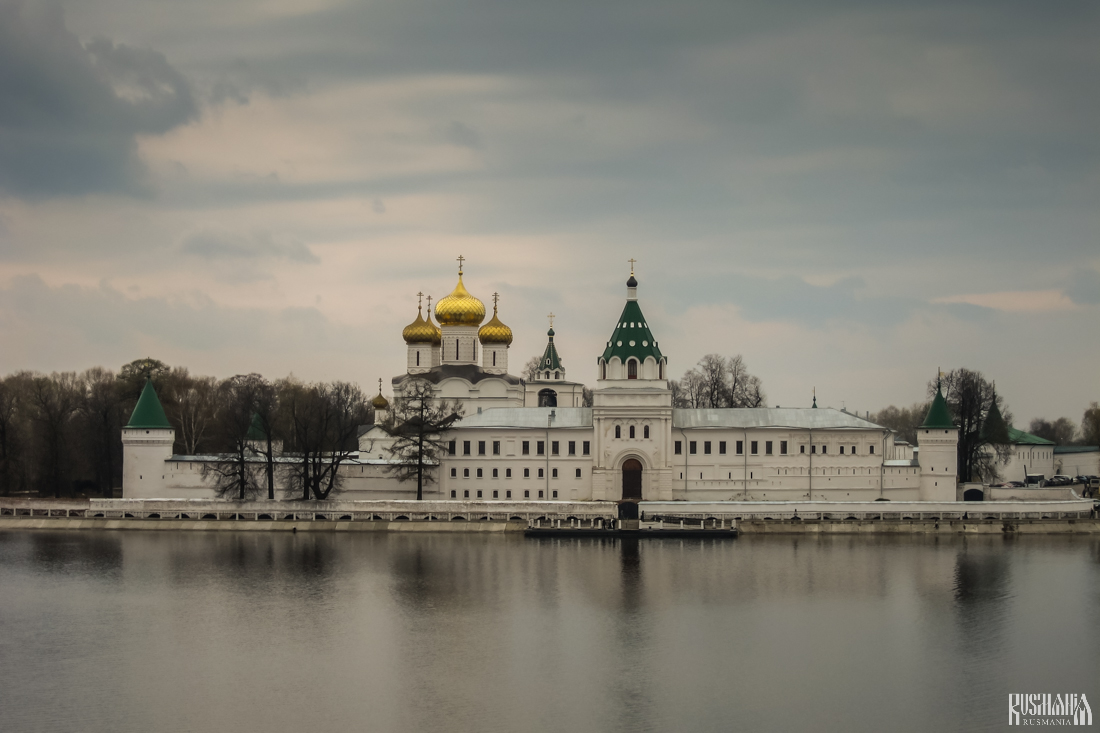
The Ipatievsky Monastery was founded in approximately 1330 by a murza of the Golden Horde called Chet who converted to Orthodoxy. Chet is considered an ancestor of the Godunov noble family, who later supported the monastery and made it into a spiritual and political centre. However the monastery eventually became more closely linked with the Romanov family, as Mikhail Romanov was at the monastery when the delegation from Moscow found him to tell him he had been named the new tsar. As such the monastery is considered the “Cradle of the House of Romanov”, and the ruling family supported the monastery and funded construction projects.
Makarievo-Unzhensky Convent - Makariev, Kostroma Region
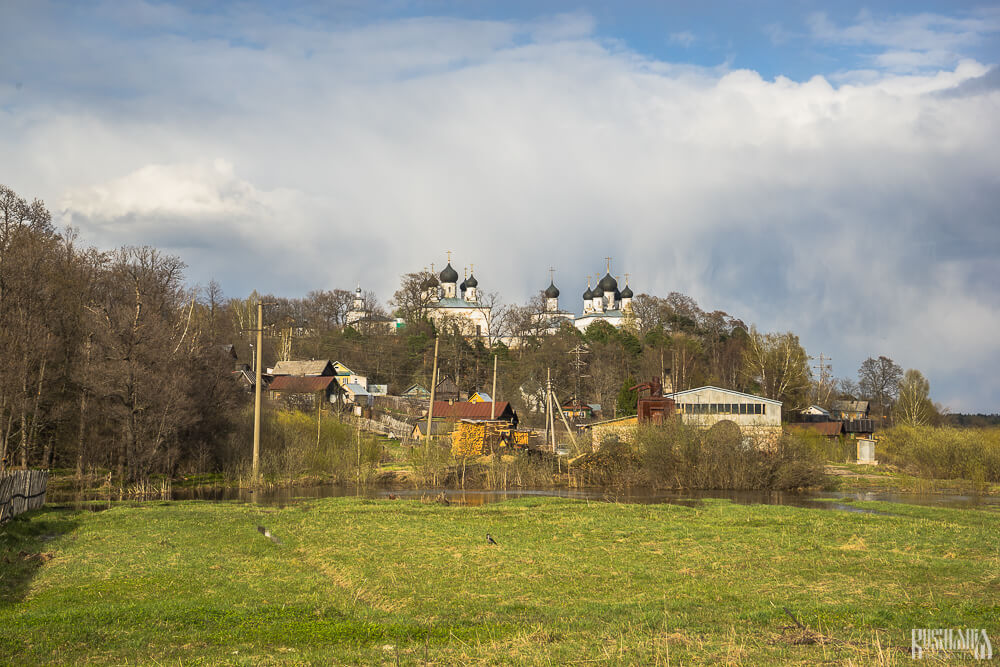
The Makarievo-Unzhensky Convent was founded as a monastery on the River Unzha by St Macarius (Makary) of Zheltovodsky in 1439 after he was released by the Tatars and not allowed to return to the previous monastery he founded. The earliest of its buildings date from the 17th century with later additions coming in the 19th century. After the Soviet period the monastery was reopened as a convent.
Kurskaya Korennaya Hermitage - Svoboda, Kursk Region
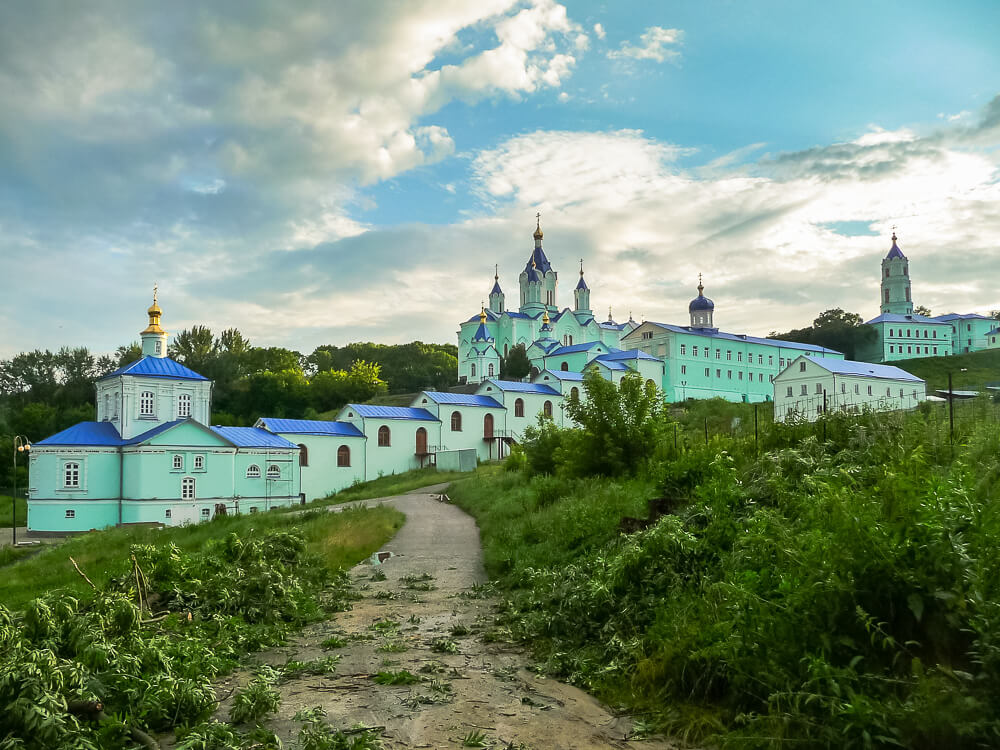
The Korennaya Hermitage was founded in 1597 at the site where the revered Kursk Root Our Lady of the Sign Icon was discovered in the roots of a tree following a destructive Tatar raid on the nearby city of Kursk. The spring which sprang from under the icon still flows, although the icon itself remains in the USA, having been taken there for safe-keeping during the Russian Civil War.
Zadonsky Rozhdestvo-Bogoroditsky Monastery - Zadonsk, Lipetsk Region
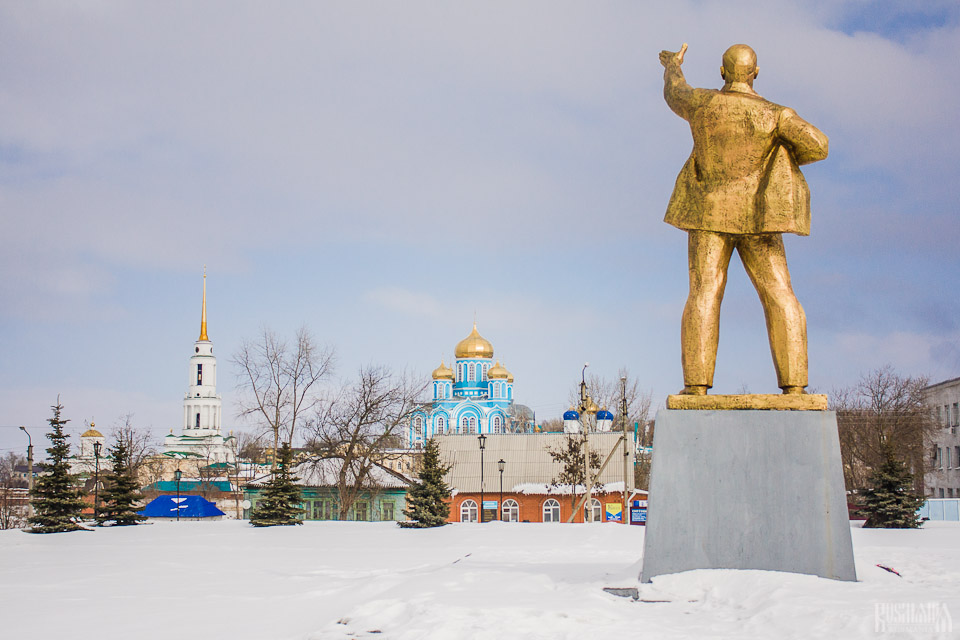
This monastery dedicated to the Nativity of the Virgin Mary is believed to have been founded in 1610 by two monks from Moscow’s Sretensky Monastery who brought with them a copy of the Our Lady of Vladimir Icon. Today the monastery is revered mainly due to its connection with St Tikhon of Zadonsk, the former Bishop of Voronezh and Yelets who retired to the monastery and spend the last two decades of his life there. In the run-up to Tikhon’s canonisation, between 1845 and 1853, the impressive Our Lady of Vladimir Cathedral was built according to a plan by famous architect Konstantin Ton.
Svyato-Danilov Monastery - Moscow
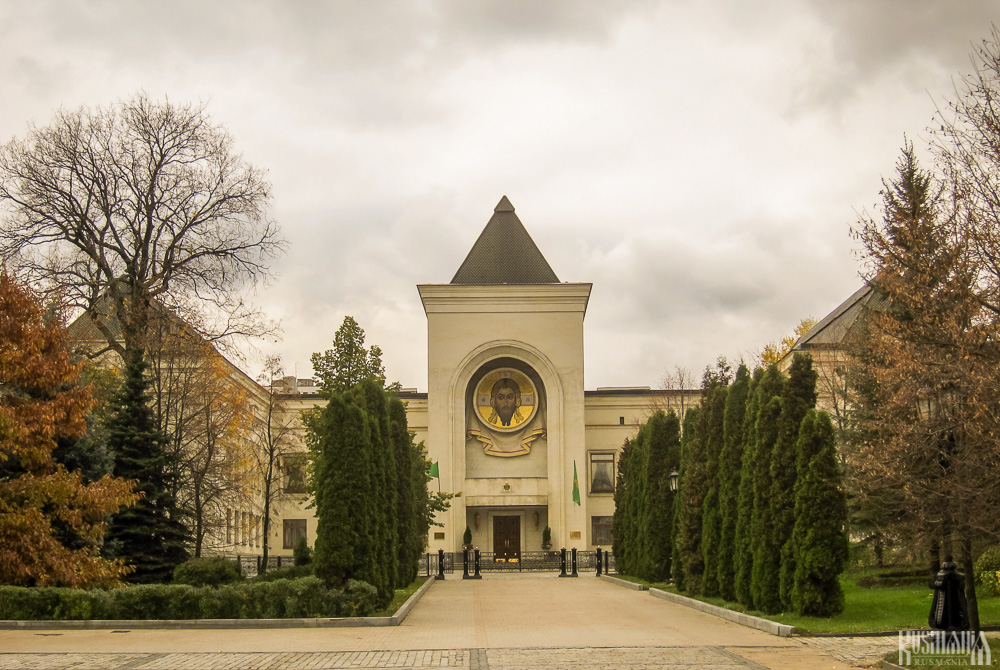
Although the exact date of foundation is unknown, the Svyato-Danilov Monastery is considered the oldest in Moscow as it was founded by Prince Daniil of Moscow who reigned between 1272 and 1303. Although not as beautiful as Donskoy Monastery or Novodevichy Convent, this monastery is significant as in 1983 it became the first monastery to be re-opened during the Soviet period and at the same time became the official residence of the Patriarch of Moscow and All-Russia.
Donskoy Monastery - Moscow
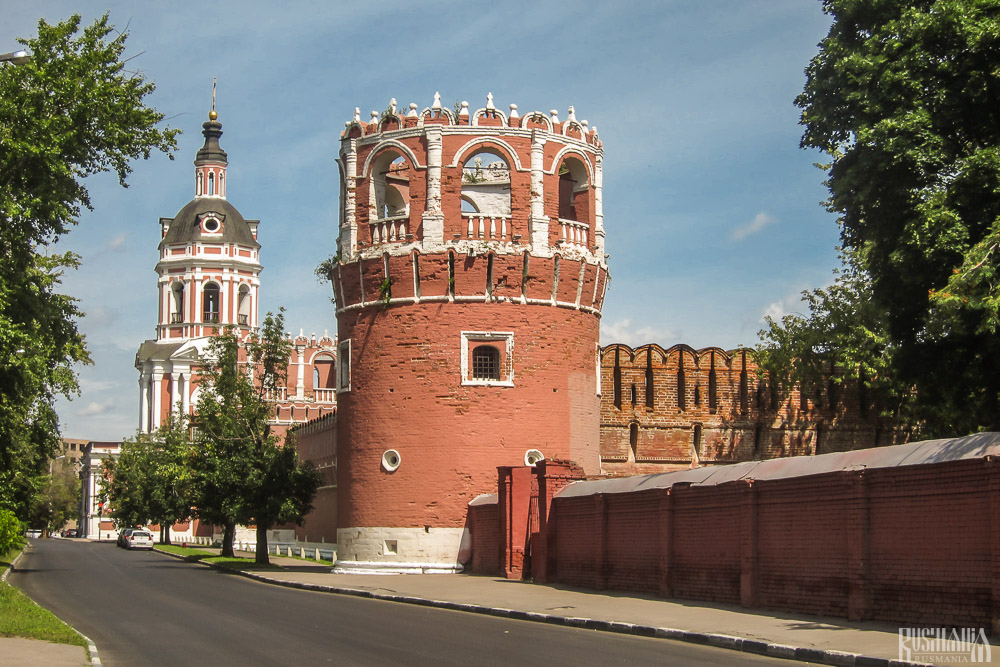
The Donskoy Monastery was founded on the order of Tsar Feodor I between 1591 and 1593 on the spot where the Russians were able to repel an invasion by Khan Ğazı II Giray of Crimea in 1591. The victory was credited to the Our Lady of the Don Icon which subsequently became the main relic of the monastery. During the Soviet years it was used as an architectural museum. The author Aleksandr Solzhenitsyn is buried here.
Novodevichy Convent - Moscow
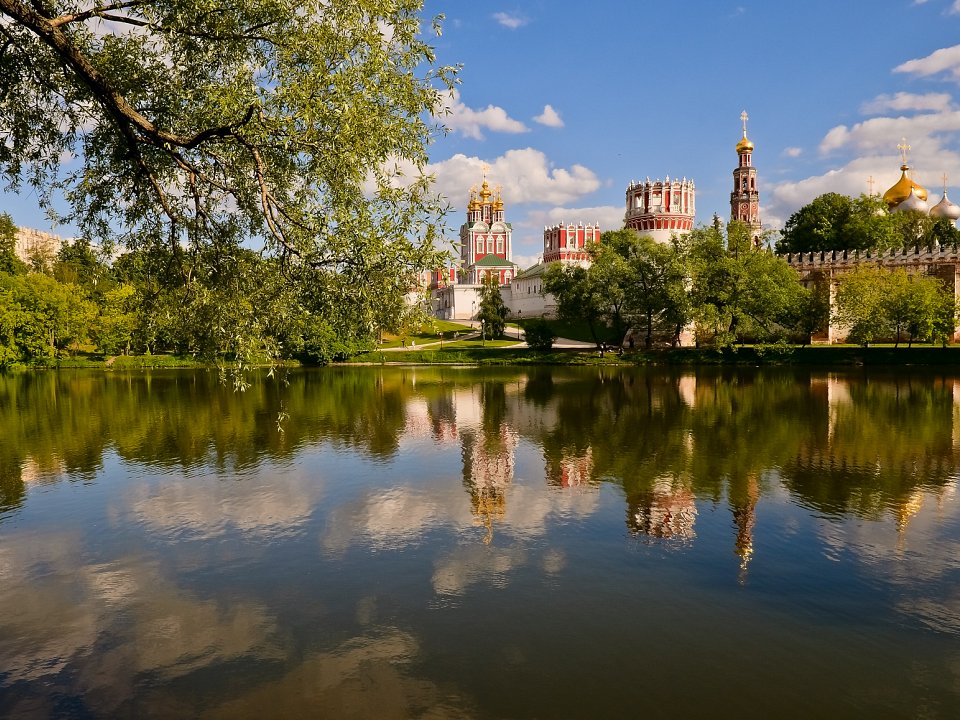
Moscow’s UNESCO-protected Novodevichy Convent was founded in 1524 on the orders of Grand Prince Vasily III and dedicated to the Our Lady of Smolensk Icon to commemorate Russia retaking the city of Smolensk in 1514. Its name translates as the New-Maiden Convent and it later became associated with female members of the Russian royal family, most famously Peter the Great’s half sister Sofia, who was imprisoned here for her role in the Streltsy Rebellion.
Spaso-Andronikov Monastery - Moscow
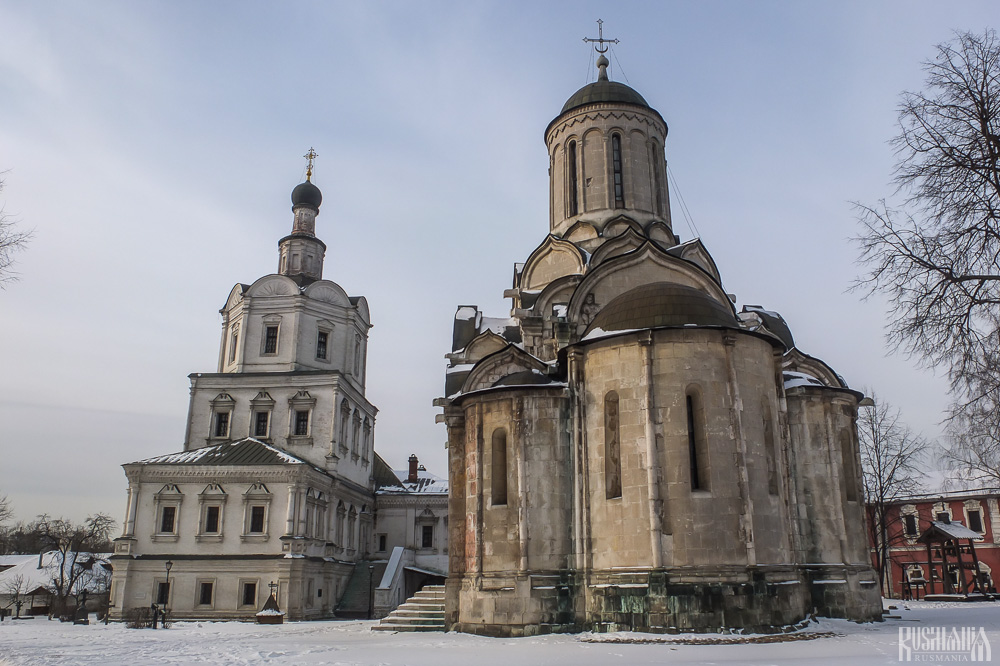
Moscow’s Spaso-Andronikov Monastery was founded in 1357 by Metropolitan Alexius (Aleksi), allegedly in gratitude for his salvation during a storm on a journey to Constantinople. The monastery gets the first part of its name from the Miracle-Image of the Saviour (Spas), a copy of which was brought back to Moscow by Alexius, and its second part from its first abbot St Andronik of Moscow, a disciple of St Sergius of Radonezh. Spaso-Andronikov Monastery later became a centre for icon and fresco painting and perhaps the greatest of all Russian icon painters, Andrey Rublev, worked here and in 1428 he died at the monastery and was buried in its grounds. Today the former monastery houses the Andrey Rublev Central Museum of Ancient Culture and Art, but its Miracle-Image of the Saviour Cathedral, which was built between 1410 and 1427, has been returned to the Church and reopened for worship.
Spaso-Borodinsky Monastery - Borodino, Moscow Region
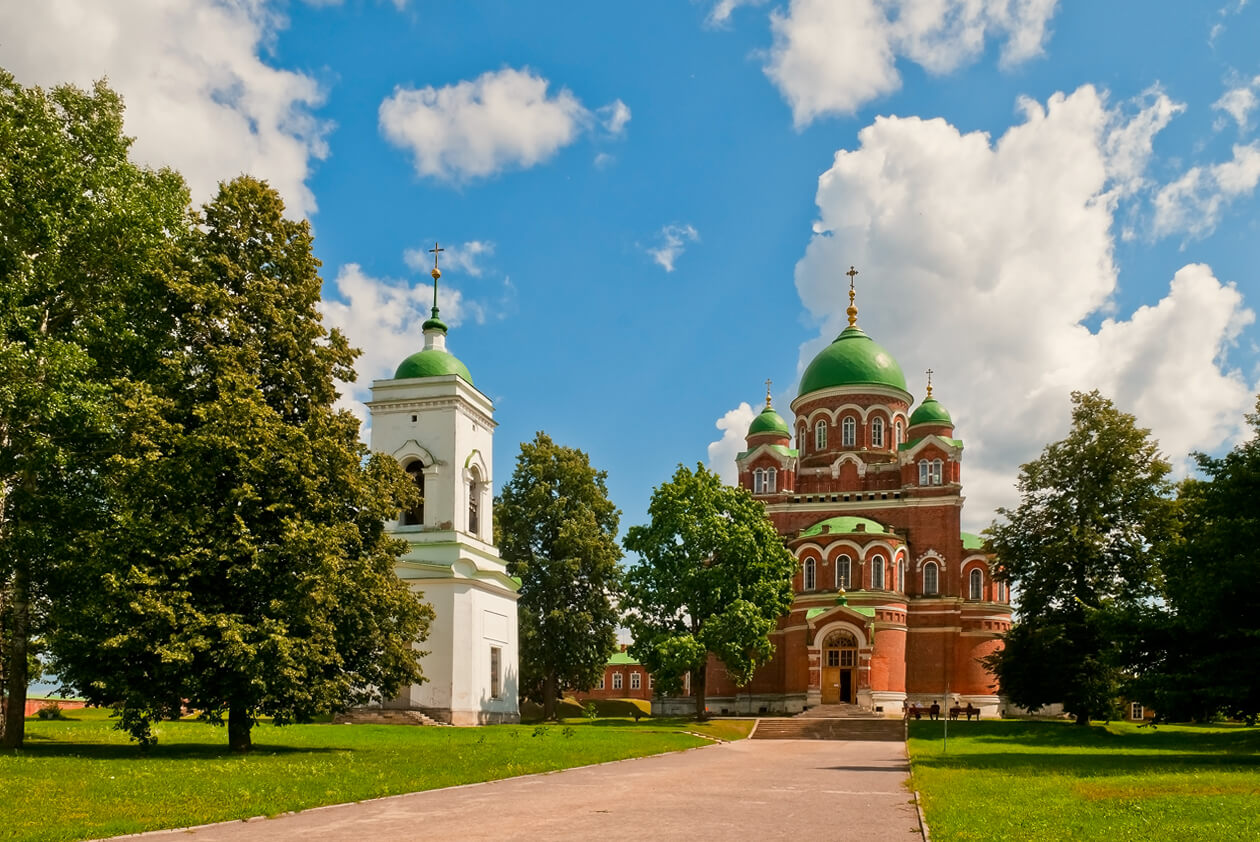
The Spaso-Borodinsky Monastery was founded in 1839 on Borodino Field - the site of the bloodiest battle of the Napoleonic Wars. It was founded by Margarita Tuchkova, the widow of General Aleksandr Tuchkov who was killed at the battle. After the battle Margarita Tuchkova went to Borodino Field to find the body of her husband but was unsuccessful. Struck by grief she decided to build a church on the location of her husband's death, selling her jewellery and seeking help from Empress-Dowager Maria Fyodorovna to do so.
Nikolo-Ugreshsky Monastery - Dzerzhinsky, Moscow Region
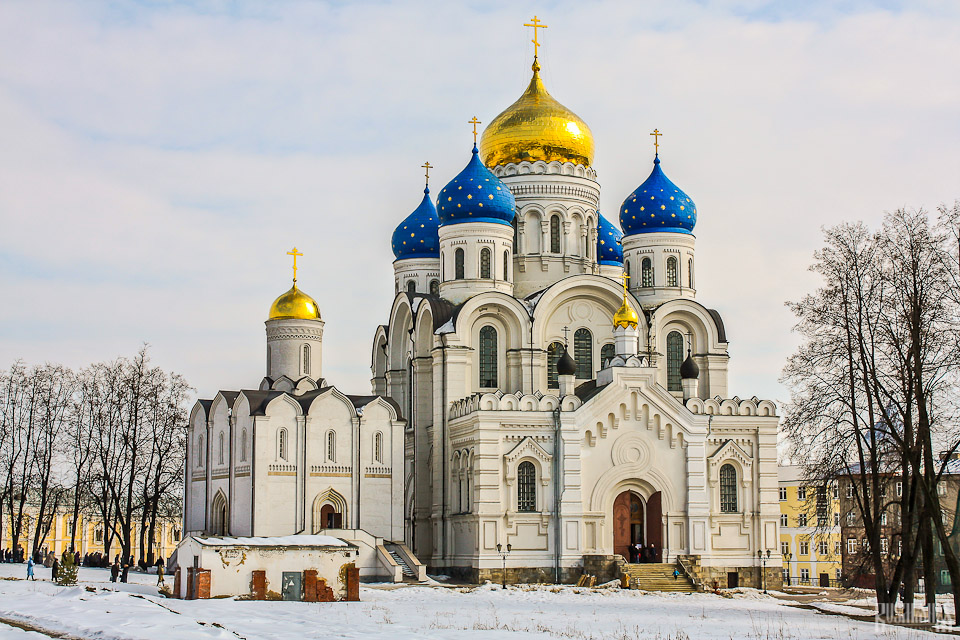
It is said that in 1380, on his way to meet the Mongol-Tatars at the Battle of Kulikovo Field, Grand Prince Dmitry Ivanovich set up camp in the area of modern day Dzerzhinsky where an icon depicting St Nicholas appeared to him. After the victory Dmitry Donskoy, as he became known following the battle, ordered the founding of a monastery and named it Ugreshsky, from the Old Russian word for "to warm" as Dmitry said the icon warmed his heart before setting off for battle.
Davidova Hermitage - Novy Byt, Moscow Region
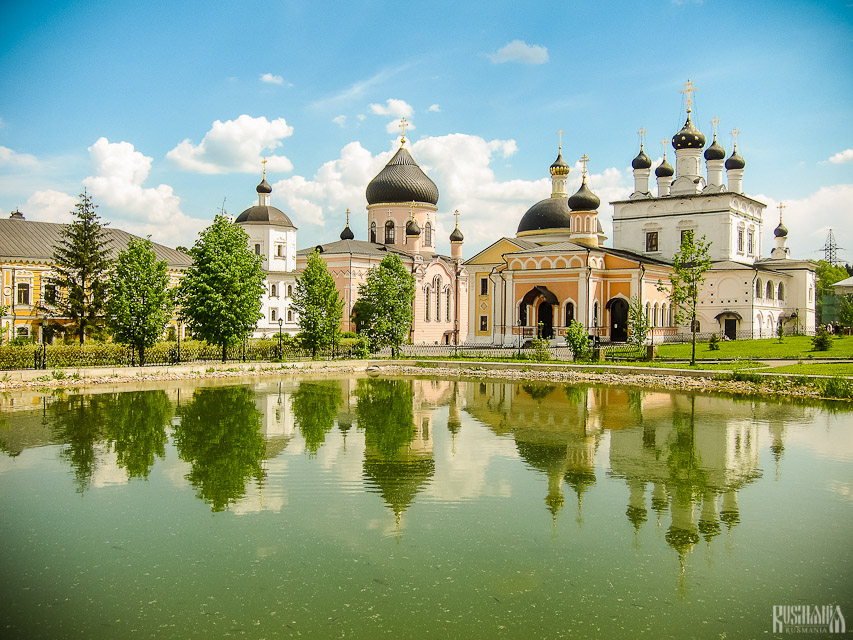
The Davidova Hermitage was founded in 1515 by St David of Serpukhov in picturesque surroundings overlooking the River Lopasnya. Its most striking feature is the bell tower and a block of five brightly-colour churches, each of a different style, that greets you as you walk in.
Novoierusalimsky Monastery - Istra, Moscow Region
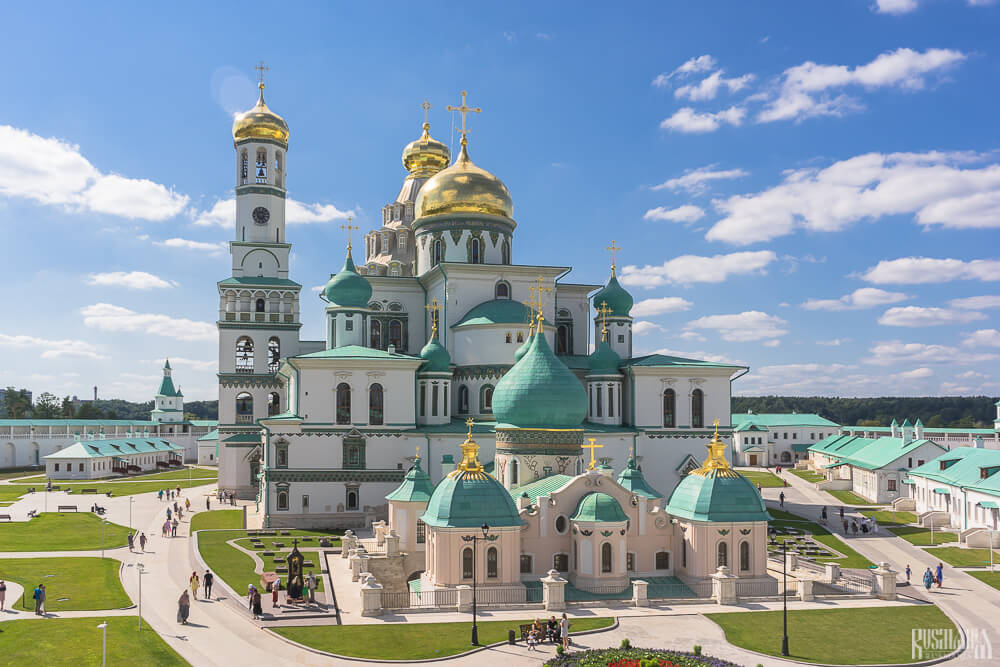
The Novoierusalimsky Monastery translates as the New Jerusalem Monastery and was founded in 1656 on the orders of Patriarch Nikon as a patriarchal residence and a Russian representation of the Holy Land. Its Resurrection Cathedral was built between 1656 and 1685 and took Jerusalem’s Church of the Holy Sepulchre as its inspiration. The monastery was heavily damaged by Nazi occupiers in the Second World War, but since its reopening in 2009 it has undergone major restoration work.
Belopesotsky Convent - Kashira, Moscow Region
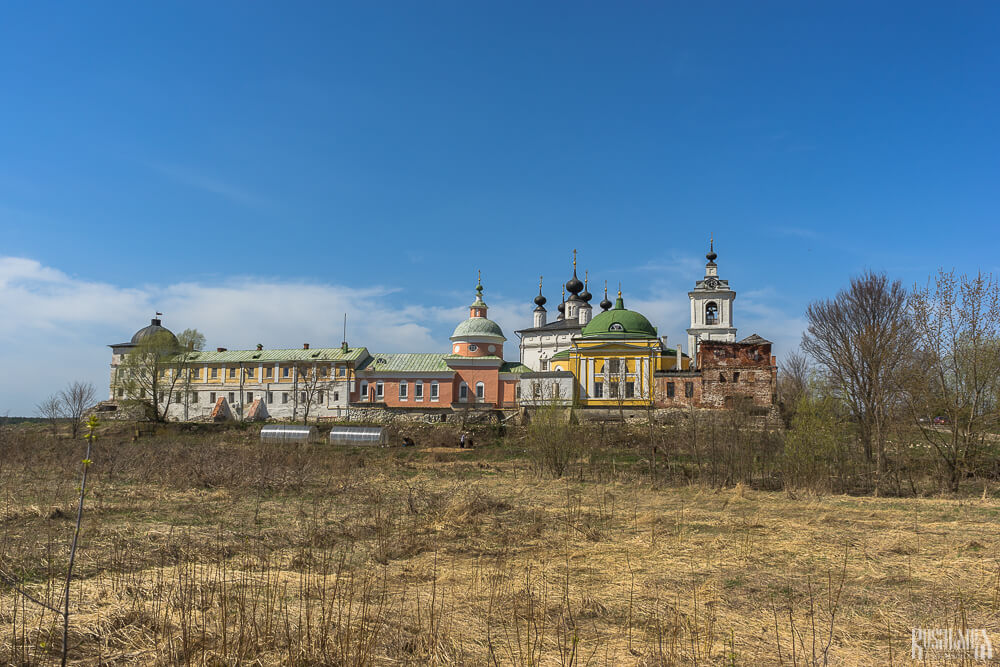
The Belopesotsky Convent, whose name translates as White-Sand, was founded as a monastery in the end of the 15th century by a monk from the Varlaamo-Khutynsky Monastery, who was later canonised as St Vladimir of Belopesotsky. It was founded on the bank of the River Oka which then marked Russia’s southern border. As such it also played a defensive role and was surrounded by fortified walls. After the Soviet period it was reopened as a convent.
Staro-Golutvin Monastery - Kolomna, Moscow Region
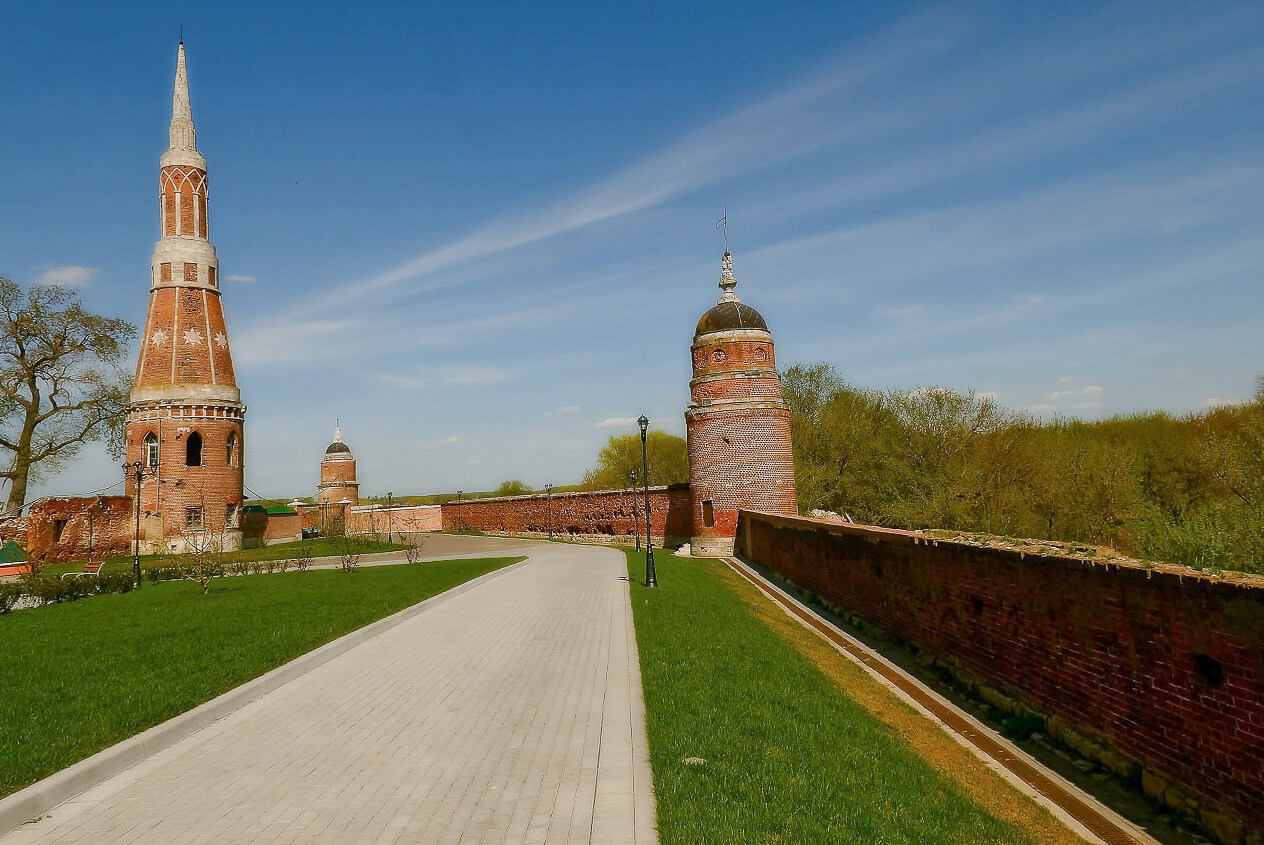
This monastery was founded in 1385 (or possibly 1374) by St Grigory of Golutvin, a pupil of St Sergius of Radonezh, who actually also played a significant role in choosing the location near to where the River Moskva flows into the Oka, just outside Kolomna. Originally just called the Golutvin Monastery the word Staro (meaning old) was added after the founding of the Novo-Golutvin Monastery in the Kolomna Kremlin. During the 18th century many of the monastery's building were replaced and it acquired its most striking feature - the tall Russian gothic towers.

Luzhetsky Monastery - Mozhaisk, Moscow Region
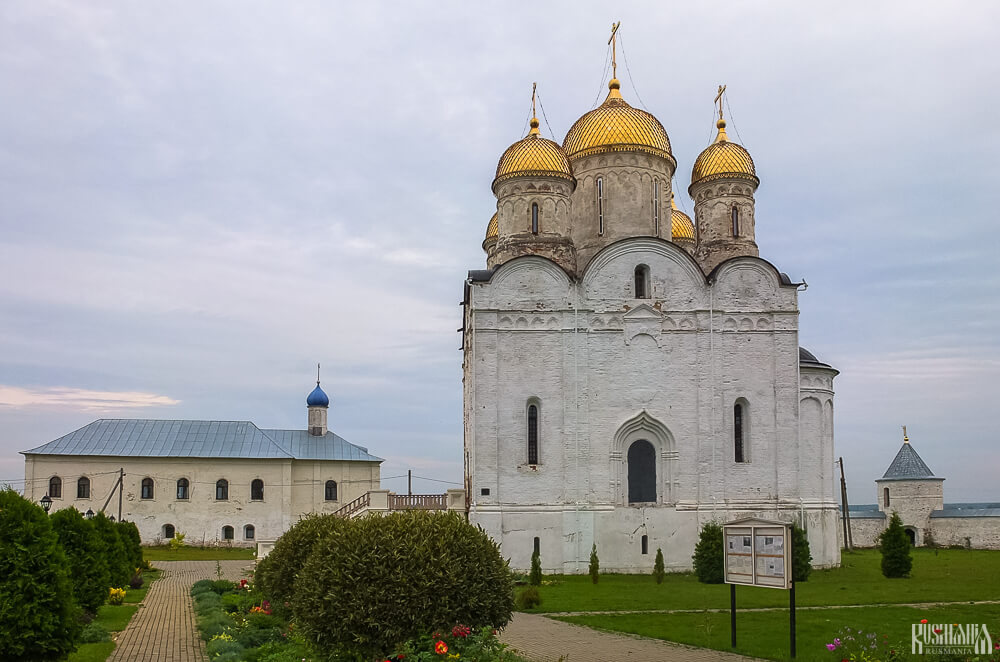
In 1408 Prince Andrey of Mozhaisk invited the monk Ferapont (later canonised as St Ferapont of Belozersk) to establish a monastery in Mozhaisk and Ferapont chose a hill on the bank of the River Moskva for its location. At one point in time the Luzhetsky Monastery was just one of 18 monasteries in Mozhaisk but now it is the only working monastery in city. Like many Russian monasteries of the time, Luzhetsky Monastery also served a defensive function and is surrounded by thick fortified walls with six towers. However its fortifications were not enough to protect it from the Polish during the Time of Troubles and or the French during Napoleon's invasion.
Troitse-Sergieva Lavra - Sergiev Posad, Moscow Region
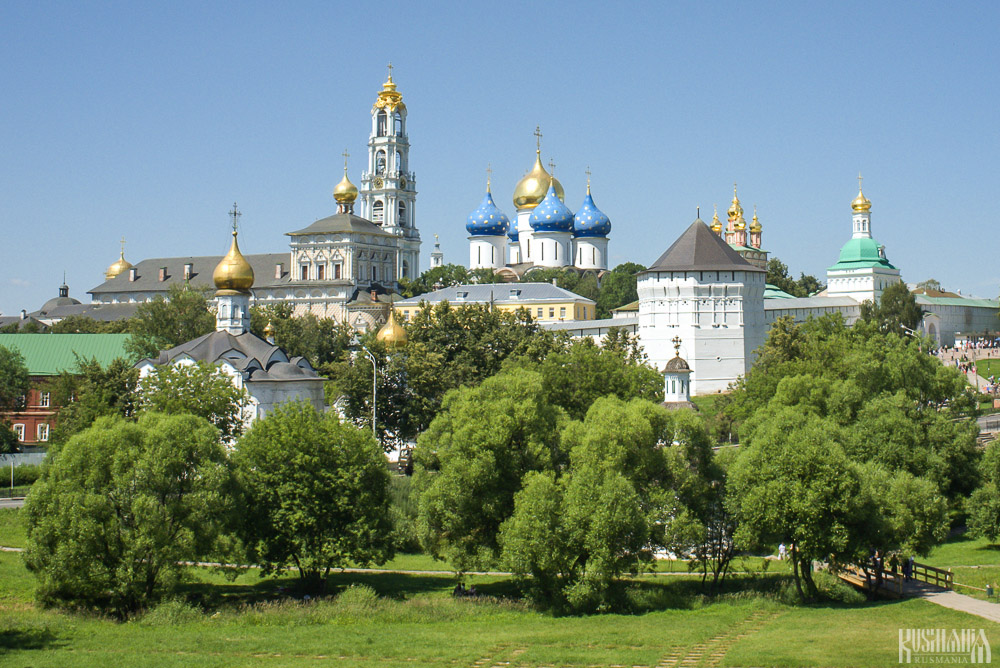
Perhaps the most revered holy place in Russia, which is recognised by the fact this monastery was granted the elevated status of a lavra in 1744 - just one of two in the country. It was founded in 1337 by St Sergius (Sergy) of Radonezh - who in turn is perhaps Russia’s most revered native saints. The lavra’s Holy Trinity Cathedral was built in 1423 and its interior was decorated by frescoes by the famous icon-painter Andrey Rublev. Rublev’s celebrated icon The Trinity was also created for the lavra (now it can be found in Moscow’s Tretyakov Gallery). The lavra rose in importance with the growing significance of the Moscow Principality, whose princes were often baptised here and later funded the construction of new churches. In 1559 Ivan the Terrible commissioned the building of the lavra’s second cathedral - the Dormition Cathedral, which was based on its namesake in the Moscow Kremlin. By this time the monastery was one of the richest and most influential in the whole of Russia, which led it to playing a significant role during the Time of Troubles when it successfully withstood a 16-month siege by Polish-Lithuanians. Although closed following the revolution, Stalin permitted it to reopen following the War. It is now a UNESCO World Heritage Site.
Vysotsky Monastery - Serpukhov, Moscow Region
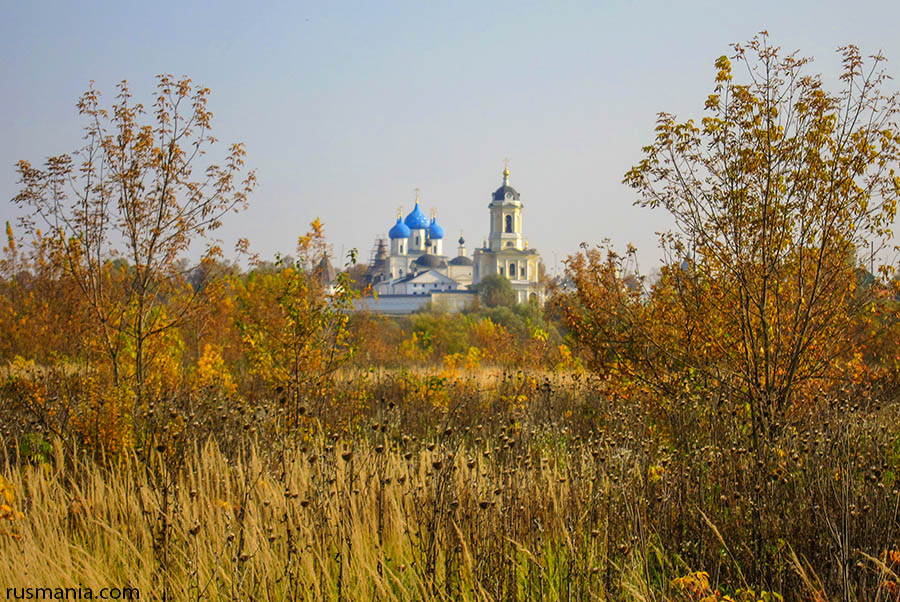
Vysotsky Monastery was founded in 1374 by Prince Vladimir Andreevich the Brave of Serpukhov with the blessing of St Sergius (Sergy) of Radonezh. The monastery has a revered copy of the Inexhaustible Chalice Icon, which is said to help cure alcoholism. According to legend the icon was found in storage after an alcoholic peasant saw it in a dream and came looking for it.
Iosifo-Volokolamsky Monastery - Teryaevo, Moscow Region
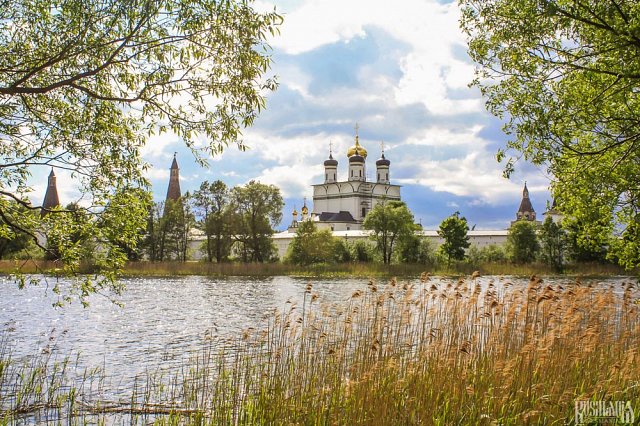
This monastery, located among lakes and woods, was once one of the most influential in the country. It was founded in 1479 by St Joseph (Iosef) of Volokolamsk - a major supporter of the Church’s right to own land. The monastery once boasted a bell tower which was the tallest building in Russia, but sadly this was blown up by Nazi occupiers during the War.
Savvino-Storozhevsky Monastery - Zvenigorod, Moscow Region
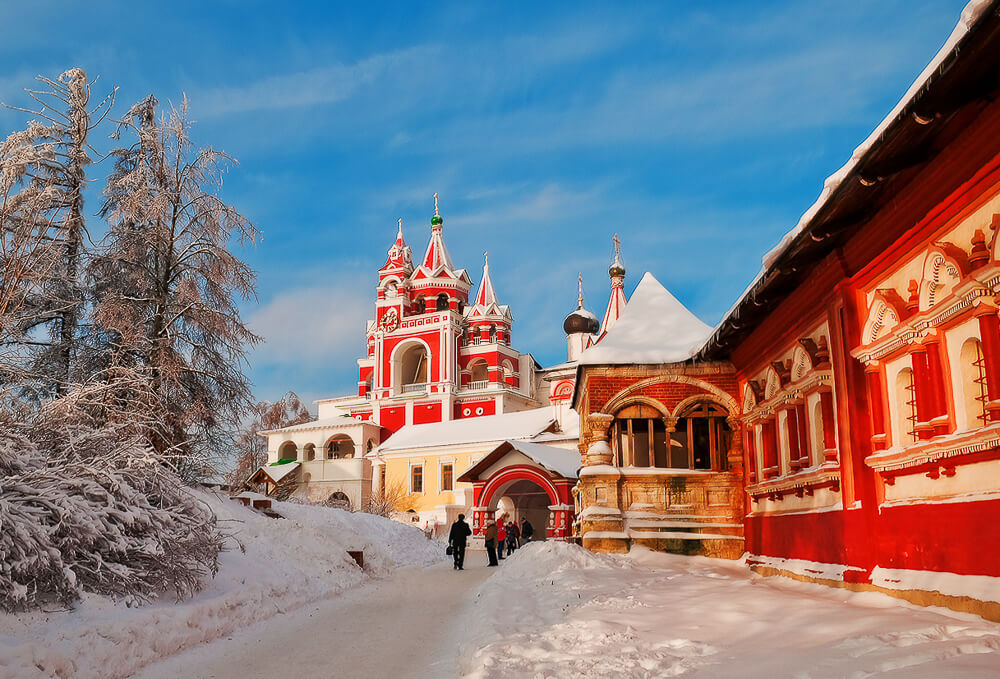
In 1398 Prince Yury of Zvenigorod asked a disciple of Sergius of Radonezh to found a monastery in his principality. The disciple, who was later canonised as St Sabbas (Savva) of Storozh, selected Storozh hill overlooking the River Moskva as the location and a wooden church was built dedicated to the Nativity of the Virgin Mary. This was later replaced with a stone version in 1405 which still stands today. Much more construction work was carried out in the 16th and 17th centuries when the monastery became a favourite place of pilgrimage among the royal family, especially Tsar Alexis, for whom the monastery became a second residence.
Ioanno-Bogoslovsky Monastery - Poschupovo, Ryazan Region
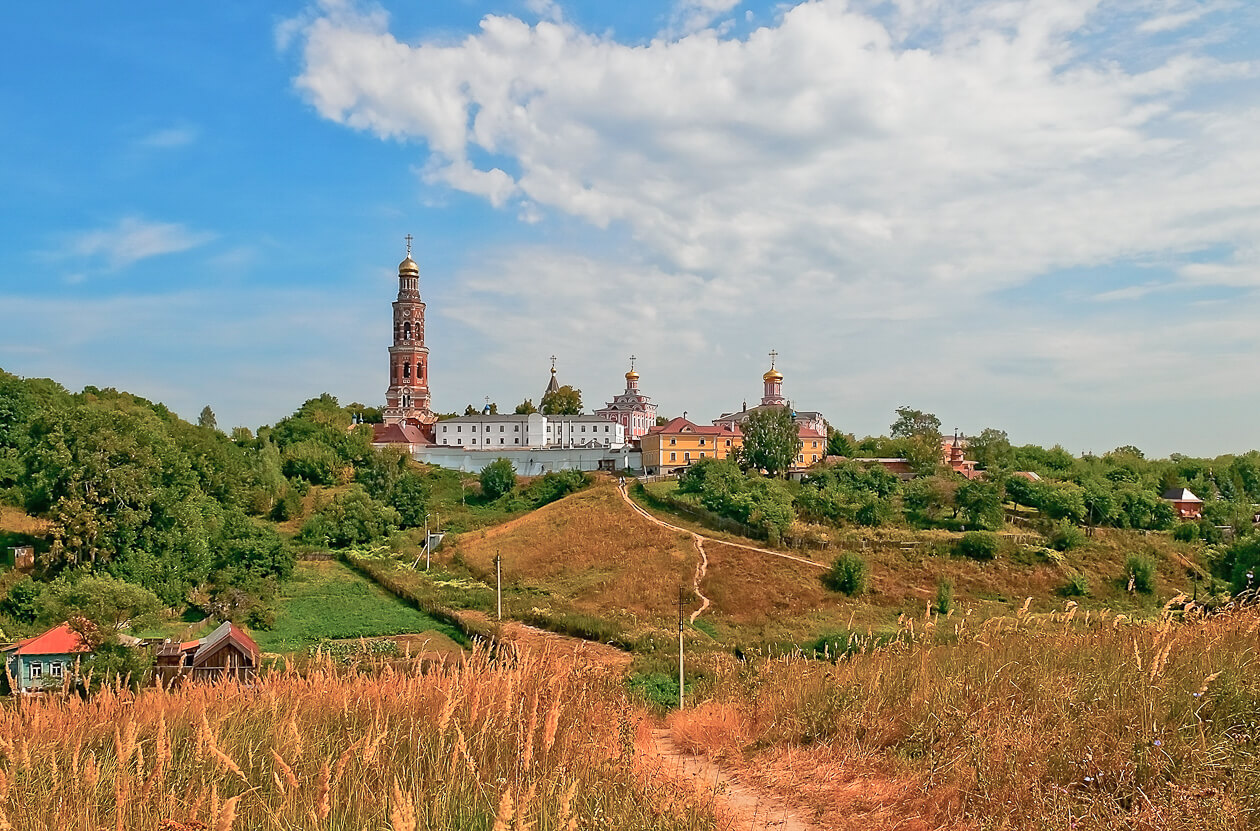
Although there is a theory that this monastery dedicated to St John the Theologian was founded in the 12th or 13th century by Byzantine missionaries, the first written mention only comes in 1534. It is possible that the monastery was refounded then following its destruction by Crimean Tatars. Its first stone buildings date from the mid-17th century.
Troitsky Boldinsky Monastery - Boldino, Smolensk Region
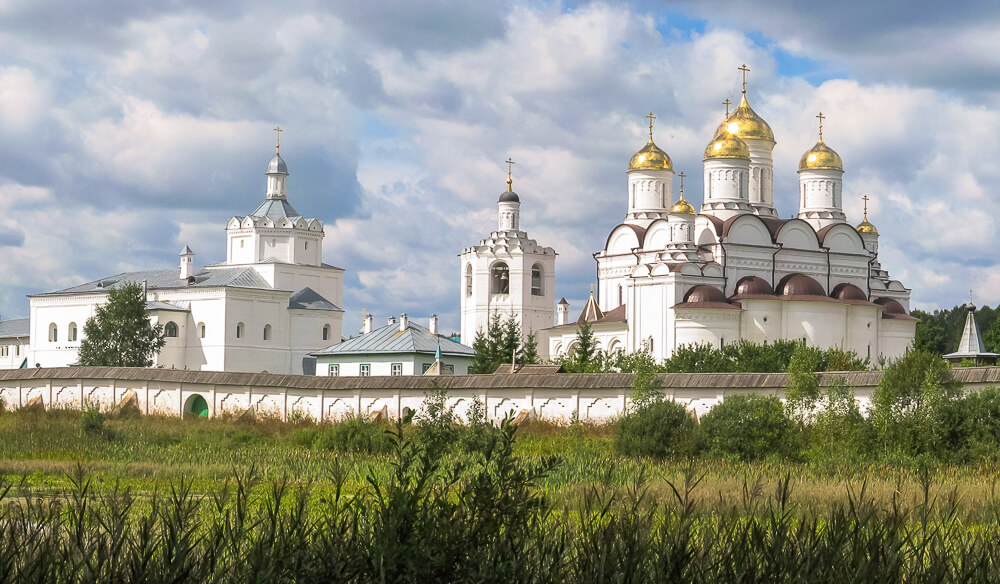
In 1530 the monk Gerasim founded this monastery dedicated to the Holy Trinity outside the city of Dorogobuzh, supposedly after hearing the sound of bells miraculously coming from the forest. Gerasim was later canonised as St Gerasim of Boldino and went on to found the Ioanno-Predtechensky Monastery in Vyazma. Heavily damaged during the war, it has since been fully restored.
Ioanno-Predtechensky Convent - Vyazma, Smolensk Region
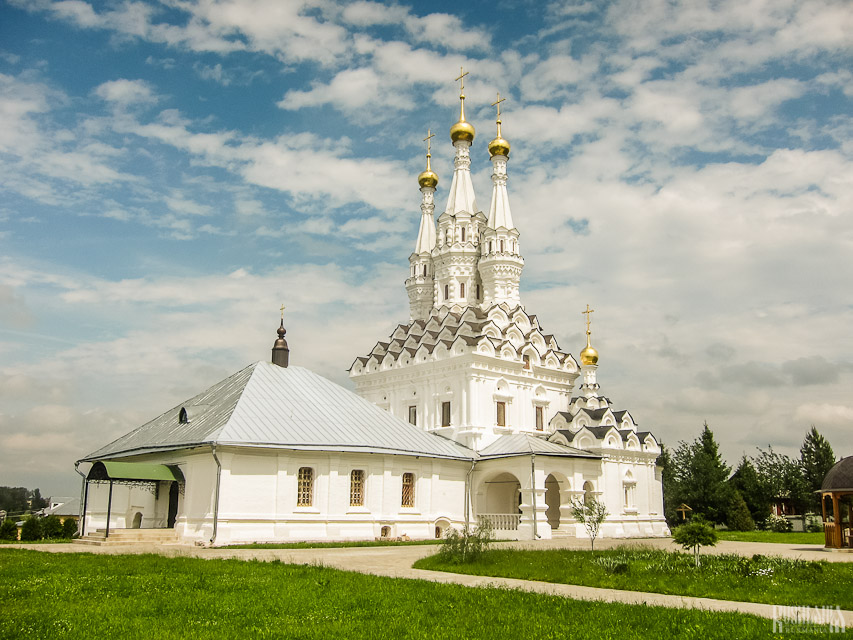
The Ioanno-Predtechensky Convent in Vyazma began its life as a religious commune established in 1535 by St Gerasim of Boldino. It officially became a monastery in 1542 and was dedicated to St John the Baptist (Ioann Predtecha in Russian). In terms of architecture the convent’s beautiful Hodegetria Church is almost unique in having three tent-domes in a row. After the Soviet period it was reopened as a convent.
Nilo-Stolobenskaya Hermitage - Ostashkov, Tver Region
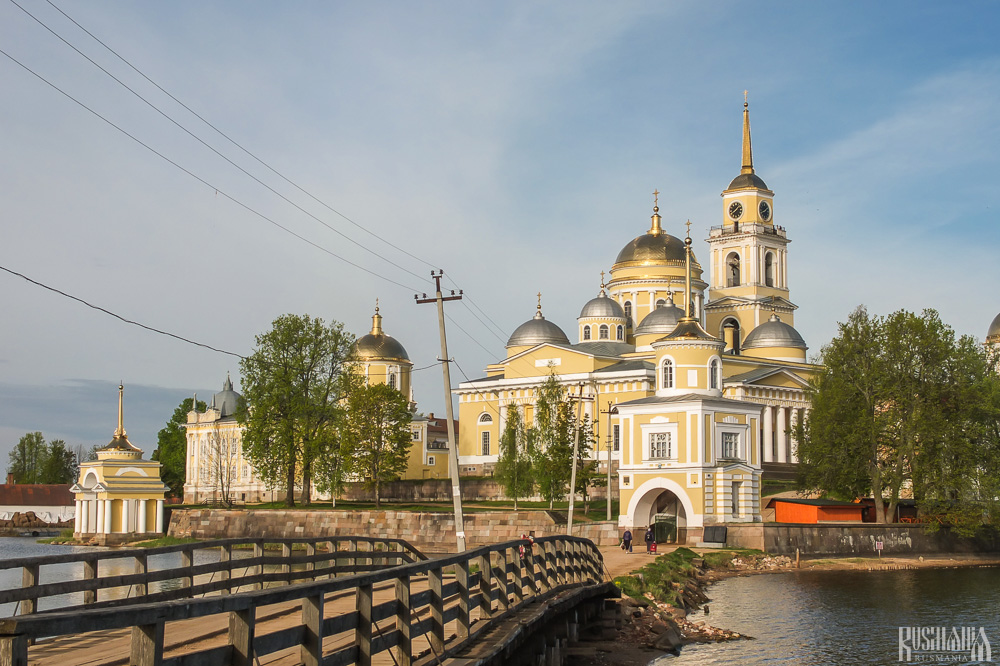
In 1528 the hermit Nil arrived on the island of Stolobeny in Lake Seliger and decided this remote spot would serve as his new place of hermitage as his previous place was being disturbed by pilgrims too often. Nil spent the last 27 years of his life on the island in a very simple cell, sleeping sat upright supported by hooks attached to the wall. In 1594 it was decided to found a monastery on the site where the revered hermit lived, and this grew to become one of the most popular monasteries for pilgrims.
Borisoglebsky Monastery - Torzhok, Tver Region
This monastery is another contender for oldest monastery in Russia. It is believed to have been founded in 1038 by a nobleman called Yefrem, an equerry to Grand Prince Vladimir the Great. The monastery was dedicated to the murdered sons of Vladimir - Ss Boris and Gleb. However the oldest surviving building at the monastery dates from the 17th century and most of the remaining buildings, includings its main cathedral, date from the reign of Empress Catherine the Great.
Kostomarovsky Convent - Kostomarovo, Voronezh Region
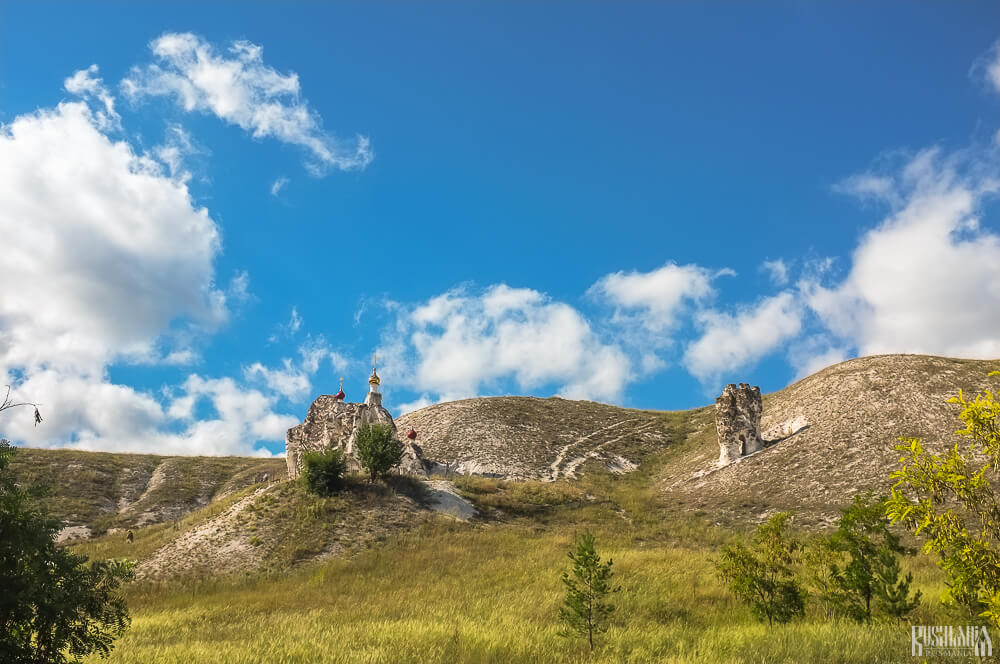
The Kostomarovsky Convent is special due to the fact that it is situated in caves close to the River Don. There is debate over as to when it was founded: one theory states that it was founded as a monastery in the mid-17th century by Ukrainian monks, while another theory believes it was founded in the 8th century by Byzantine Christians fleeing the policies of iconoclasm. However what is certain is that the first written mention of the monastery came in the end of the 18th century and it had connections with other nearby cave monasteries in Belogorye and Divnogorye.
Svyato-Bogolyubsky Monastery - Bogolyubovo, Vladimir Region
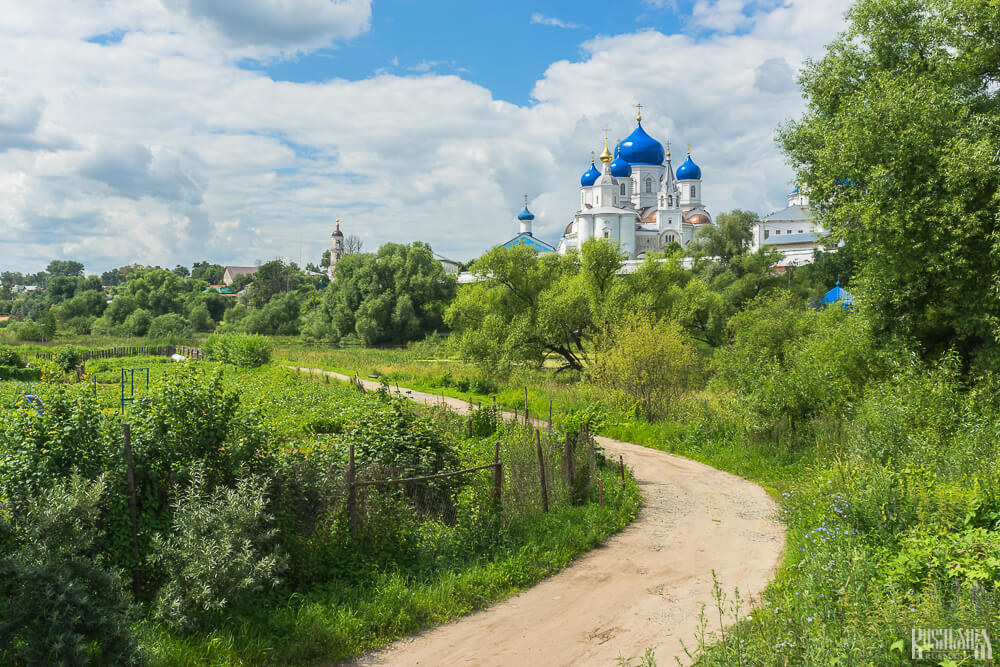
The Svyato-Bogolyubsky Monastery was originally founded by Grand Prince Andrey Bogolyubsky in 1158 when he had his residence built in Bogolyubovo, supposedly following an appearance of the Virgin Mary, and a small section of this original residence still stands. Just outside the monastery is the simple but stunning Intercession Church on the Nerl - an 12th century masterpiece of Russian architecture.
Spaso-Yevfimiev Monastery - Suzdal, Vladimir Region
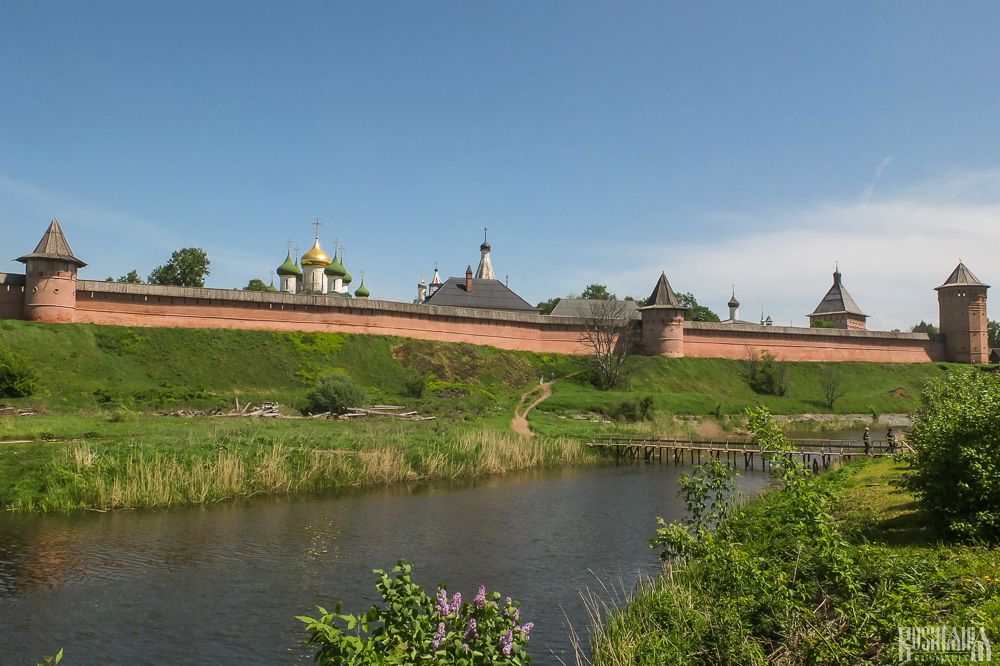
With its strong walls and towers, Suzdal’s Spaso-Yevfimiev Monastery is sometimes confused for the Suzdal Kremlin, whose walls no longer survive. The monastery was founded in 1352 by Prince Boris Konstantinovich of Suzdal-Nizhny Novgorod and dedicated to the Transfiguration of the Saviour. It now also bears the name of its first abbot - St Euphemius (Yevfimi) of Suzdal. In 1445 a battle between the Russians and the Kazan Tatars was fought beneath its walls, which ended in defeat for the Russians and Grand Prince Vasily II being captured. Today the monastery is still run as a museum and the complex is protected by UNESCO.
Mikhailo-Arkhangelsky Monastery - Yuriev-Polsky, Vladimir Region
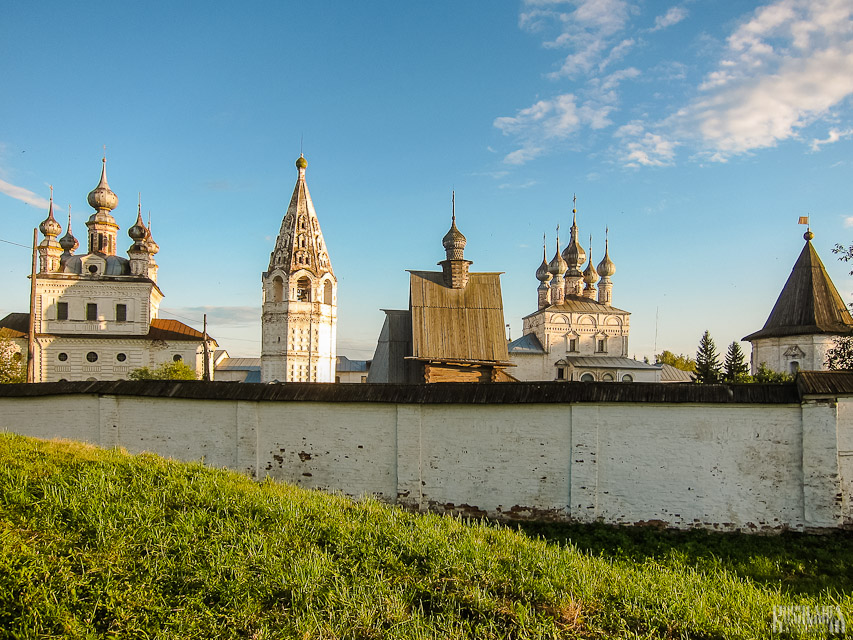
Situated inside Yuriev-Polsky’s kremlin mounds is the Mikhailo-Arkhangelsky Monastery, which is believed to have been founded in the 12th century by Grand Prince Svyatoslav Vsevolodich when he was still prince of Yuriev-Polsky. The monastery was completely destroyed by the Mongols in 1238 and was only reestablished in the 15th century. Archangel Michael’s Cathedral has been returned to the monastery, but other buildings are still used as a museum.
Borisoglebsky Monastery - Borisoglebsky, Yaroslavl Region
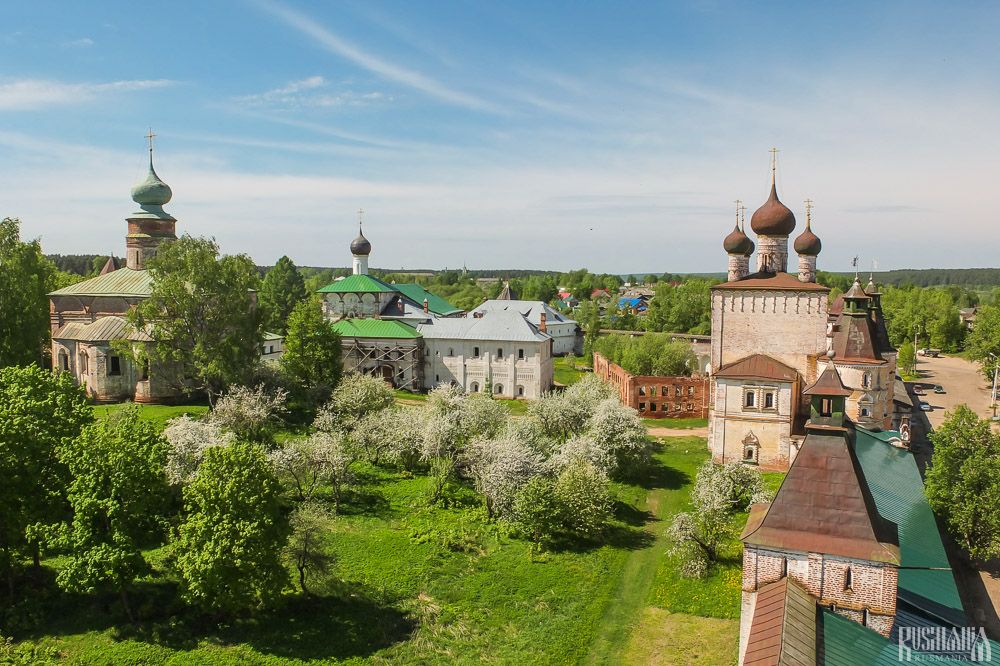
The Borisoglebsky Monastery was founded in 1363 by two monks from Novgorod with the blessing of St Sergius of Radonezh. It was dedicated to Russia’s first native saints: half-brothers Prince Boris of Rostov and Prince Gleb of Murom. Over time the monastery grew very rich as gifts of lands and riches were lavished upon it by grand princes and tsars. In the late 17th century Metropolitan Jonah (Iona) Sysoev of Rostov launched a construction project at the monastery tha tincluded the construction of new buildings and massive walls, 1,040 metres in length and up to 12 metres tall and three metres thick in places, with 14 towers.
Goritsky Uspensky Monastery - Pereslavl-Zalessky, Yaroslavl Region

Pereslavl-Zalessky's Goritsky Uspensky Monastery was founded in the beginning of the 14th century during the reign of Grand Prince Ivan Kalita. It is known that St Demetrius (Dmitry) of Priluki and St Daniel (Daniil) of Pereslavl-Zalessky were once monks at the monastery before going on to found new monasteries. The monastery was dissolved way back in 1744, becoming instead a residence for the bishop. Much of the surviving buildings date from this time. It became a museum in 1919 following the Revolution and remains a museum today.
Spaso-Yakovlevsky Monastery - Rostov, Yaroslavl Region
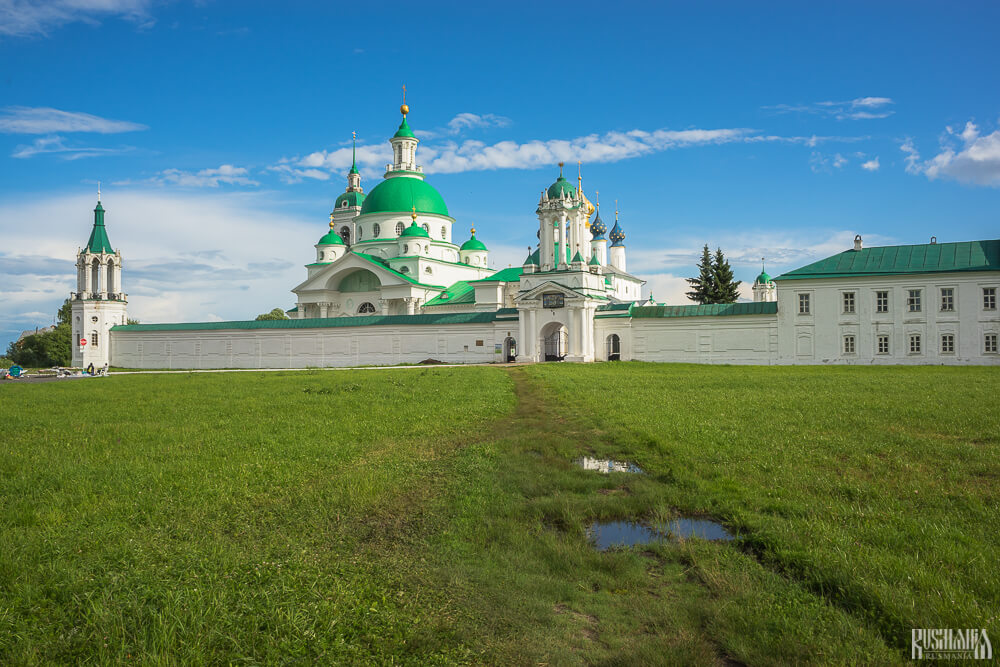
The Spaso-Yakovlevsky Monastery was founded on the shore of Lake Nero as the Zachatievsky Monastery in approximately 1390 by Bishop Yakov of Rostov (later canonised as St Jacob (Yakov) of Rostov). In 1765 the neighbouring Spaso-Pesotsky Monastery was dissolved and its cathedral became part of the Zachatievsky Monastery which was renamed Spaso-Yakovlevsky Monastery after the old monastery dedicated to the Saviour (Spas) and St Jacob of Rostov.
Spaso-Preobrazhensky Monastery - Yaroslavl, Yaroslavl Region
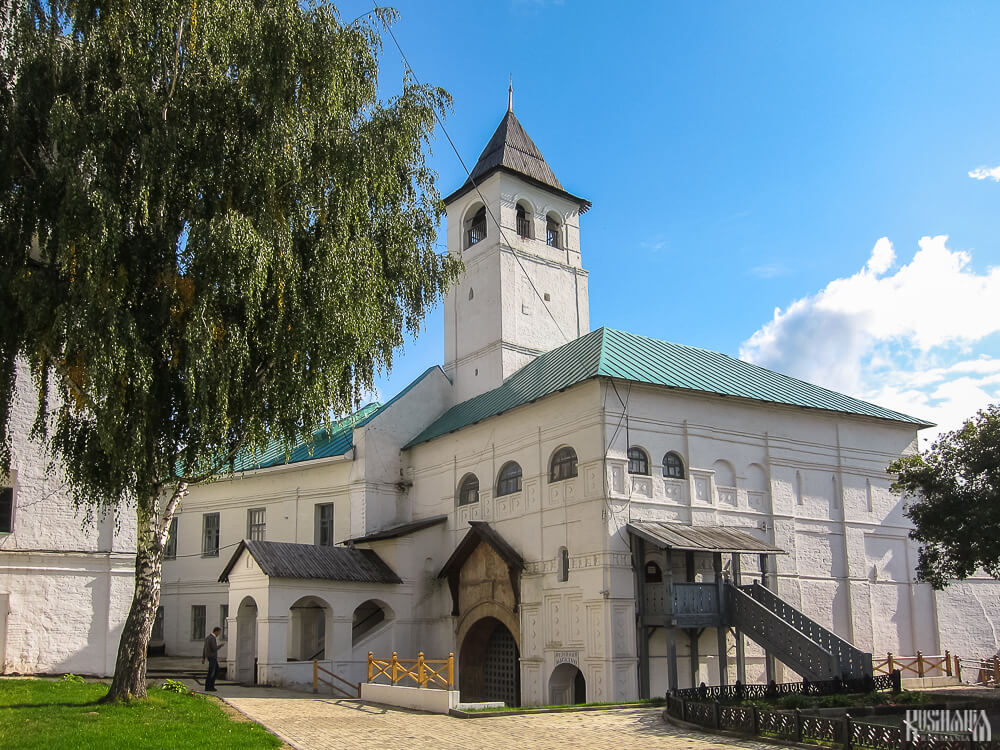
Yaroslavl’s Spaso-Preobrazhensky Monastery is believed to date from the 12th century. It was established on the northern bank of the River Kotorosl, which was then outside of the city centre, and served a defensive function as well as a religious one. The addition of fortified walls in the 16th century has led to the monastery sometimes being confused for the Yaroslavl Kremlin, which today survives in name only. The princes of Yaroslavl had a residence at the monastery and were buried at the monastery’s Transfiguration of the Saviour Cathedral, the current version of which dates from 1516 and features frescoes from the mid-16th century. During the Time of Troubles the monastery endured a one-month siege by Polish interventionists whilst the rest of the city was under occupation. Later the volunteer army of Pozharsky and Minin set up camp in the monastery and stayed there for several months until they finally set off to liberate Moscow. Today the monastery remains a museum - the Yaroslavl State Historical, Architectural and Artistic Museum-Reserve.
Tolgsky Convent - Yaroslavl, Yaroslavl Region
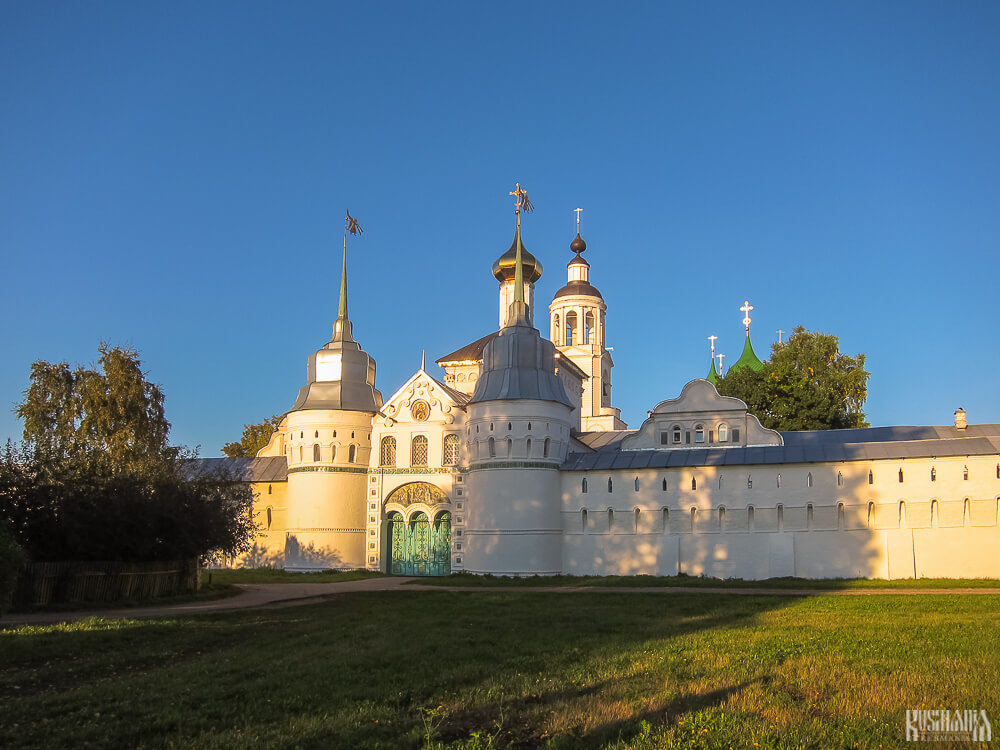
The Tolgsky Convent was originally founded as a monastery in 1314 by the Bishop of Rostov. According to legend the bishop and his company stopped on their return journey to Yaroslavl on the banks of the Volga to spend the night. He saw a vision of the Virgin Mary and then in the morning found an icon. The icon became known as the Our Lady of Tolga Icon and this monastery was established to hold it. In the 17th century the monastery gained new walls and a new cathedral to hold the icon. After the Soviet Period, the monastery was reopened as a convent.
Svyato-Troitsky Convent - Murom, Vladimir Region
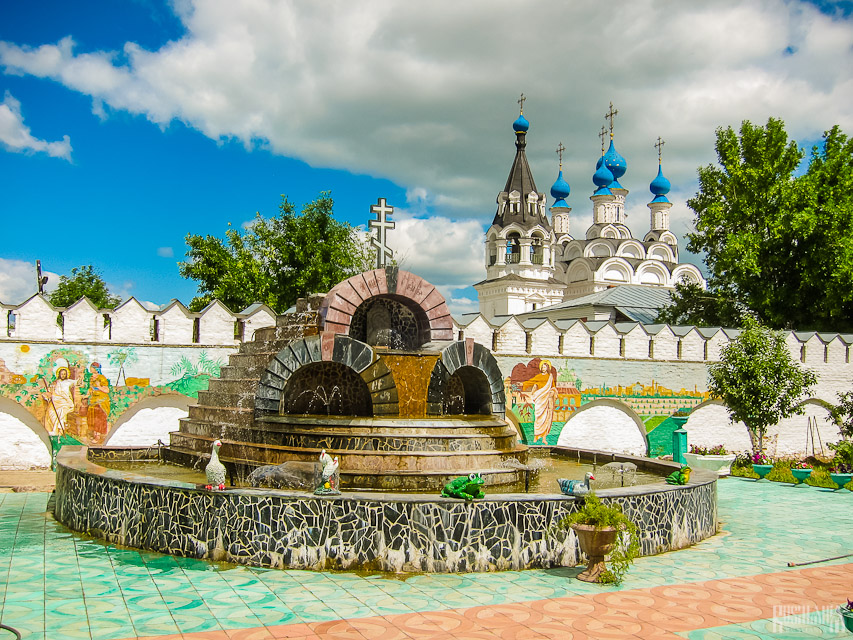
Murom’s Svyato-Troitsky Convent was founded, possibly on the site of the city’s first wooden church, in approximately 1643 by a local merchant, who funded the construction of the convent’s Holy Trinity Cathedral. The cathedral survives to this day and is famous for its highly decorative Russian ‘uzorochye’ style. Today the convent is revered as it holds the relics of Ss Peter (Pyotr) and Fevronia - Russia’s patron saints of the family. Before becoming a monk, Peter was Prince Davyd of Murom.
Spaso-Preobrazhensky Monastery - Murom, Vladimir Region
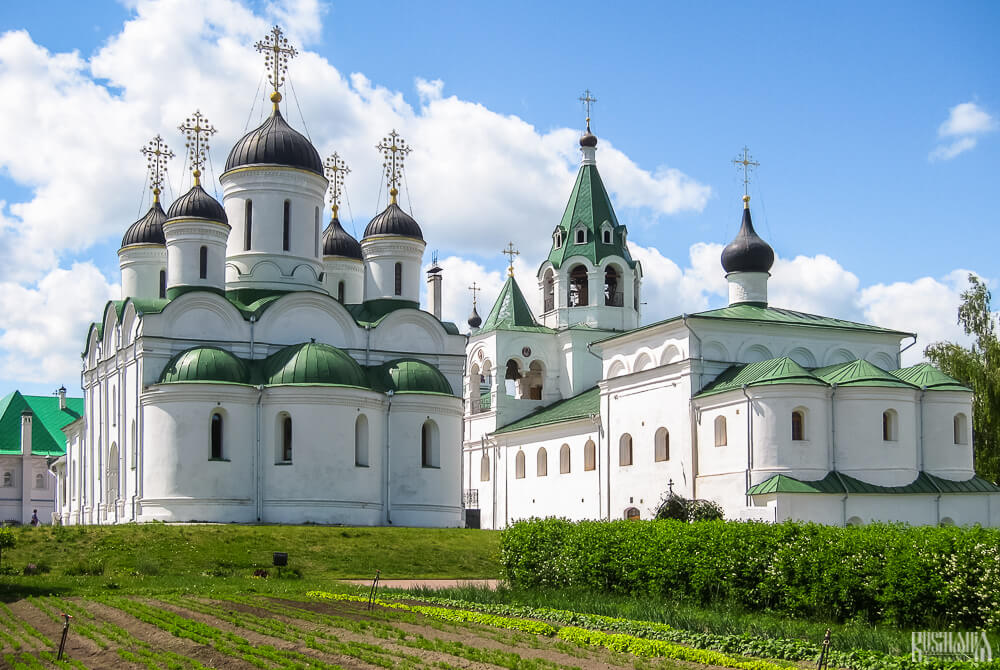
Located on highland overlooking the River Oka is the Spaso-Preobrazhensky Monastery, which is the largest of several monasteries located in Murom. The first mention of the monastery came in 1096, but it is possible that it was founded even earlier during the reign of the Prince Gleb of Murom - who, with his brother Boris, later became Russia’s first native saint. In any case it is one of the oldest monasteries in Russia. Tsar Ivan the Terrible became a main benefactor after he stopped in the city on his campaigns against the Kazan Khanate and made an oath to build churches in Murom should he be successful. He later fulfilled his pledge with the construction of the monastery's first stone cathedral between 1552 and 1560 - the Transfiguration of the Saviour Cathedral, which still stands today.
Svyato-Uspensky Monastery - Staritsa, Tver Region
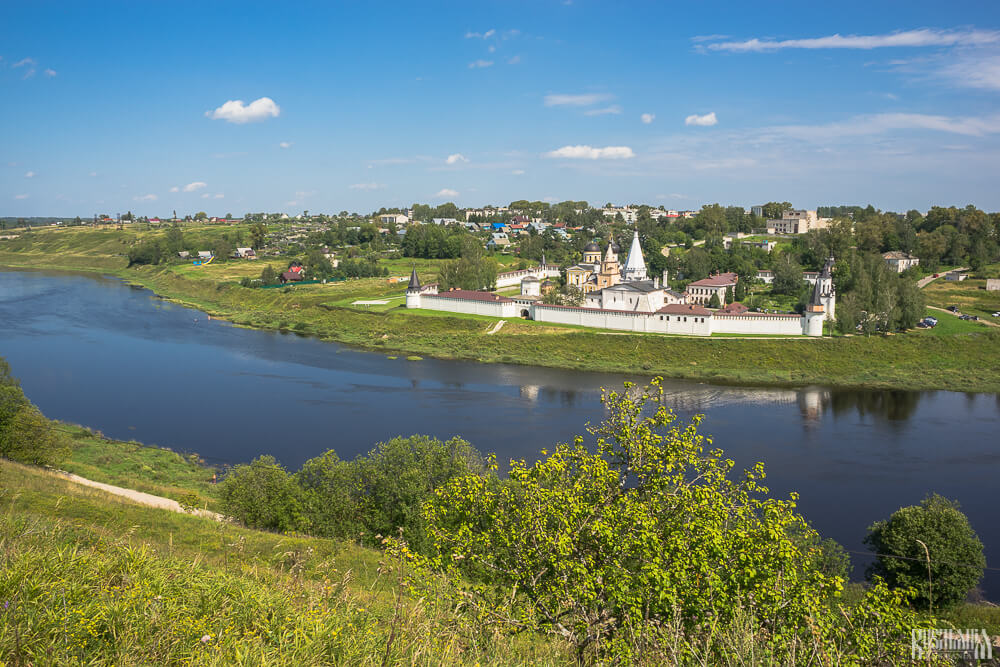
The Svyato-Uspensky Monastery, which translates as the Holy Dormition Monastery, was founded in the first half of the 16th century on the orders of Prince Andrey of Staritsa - the uncle of Ivan the Terrible. The monastery grew in stature later in the century thanks to the patronage of Ivan the Terrible, who ordered the construction of a new cathedral. Its former abbot also became Russia’s first independent patriarch - Patriarch Job (Iov), who was later exiled back to Staritsa during the Time of Troubles where he subsequently died.
NORTH-WESTERN FEDERAL DISTRICT
Solovetsky Monastery - Solovetsky Island, Arkhangelsk Region
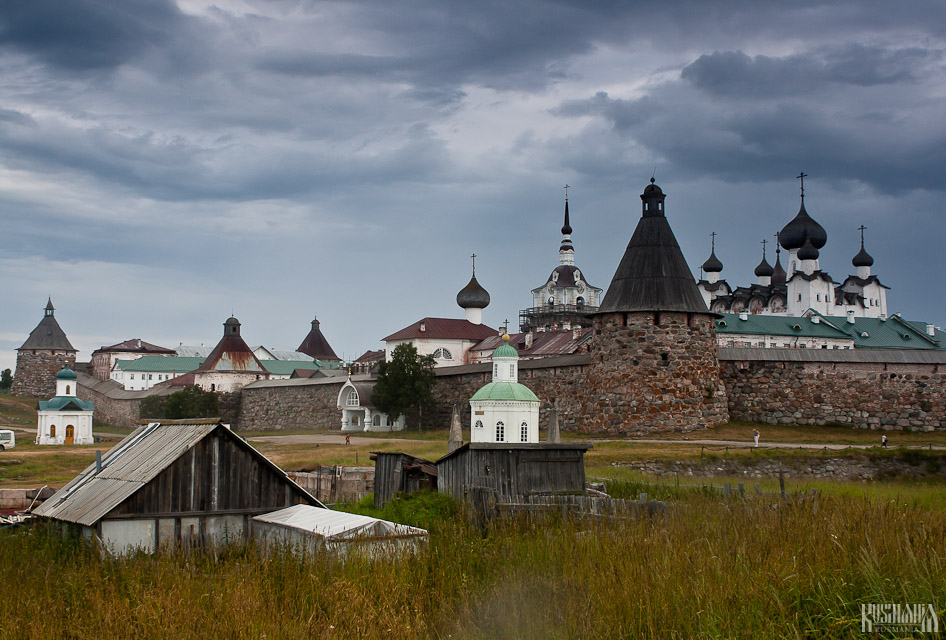
The remote, UNESCO-protected Solovetsky Monastery is perhaps one of the most iconic monasteries in Russia. It was founded in 1436 on the largest island of an archipelago in the White Sea by three hermits Zosima, German and Savvaty who have all since been canonised. Its massive walls, incorporating five-metre wide boulders, have served the monastery well over the centuries, defending it from attacks by the Swedes and the British. They were also used to keep people in, and its remoteness and fortifications led to the monastery doubling up as a prison for the Tsarist regime, while the Bolsheviks infamously turned it into the prototype Gulag camp in 1919.
Valaamsky Monastery - Valaam Island, Republic of Karelia

It is not known for certain when the Valaamsky Monastery was founded on a remote island in Lake Ladoga, but one theory suggests even as far back as the 10th century by two monks, who have since been canonised as Ss Sergius (Sergy) and Herman (German) of Valaam. The monastery suffered at the hands of the Swedes during the Time of Troubles and the Great Northern War. Its distinctive Transfiguration of the Saviour Cathedral was constructed in 1774 as part of the restoration work ordered by Empress Elizabeth. In 1917 the monastery found itself in independent Finland, and it only became part of Russia again during the Second World War. However its monks had evacuated in 1940 and set up a new monastery in Finland. It was only reopened in 1989. In addition to the monastery, there are also several hermitages on other islands in the archipelago.
Konevsky Monastery - Konevets Island, Leningrad Region
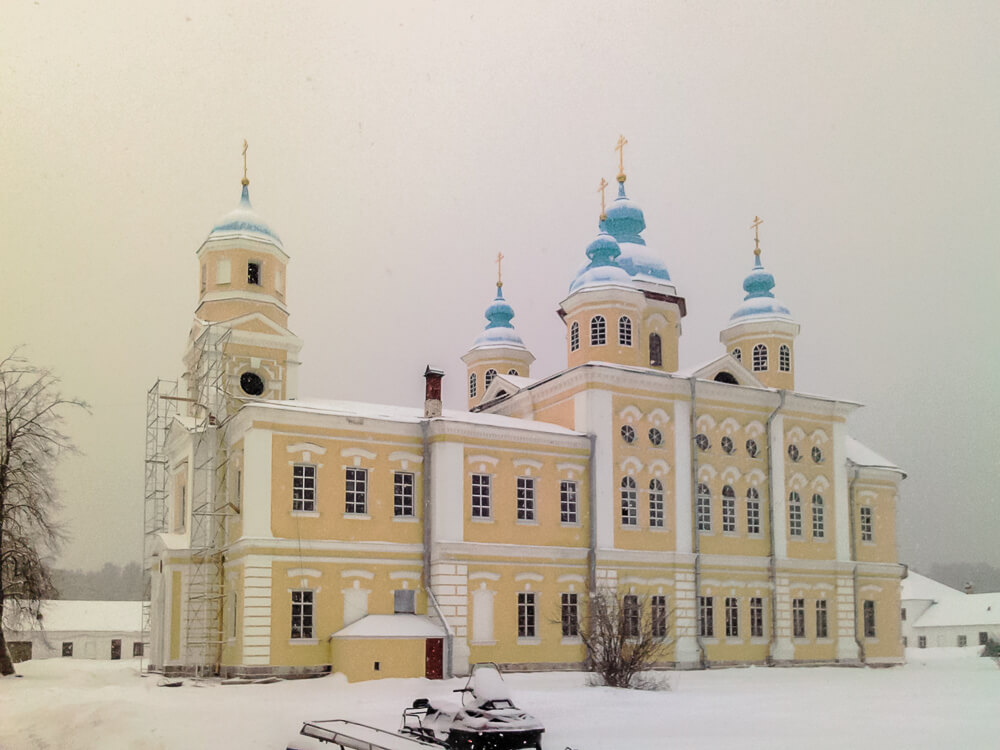
Another of the Russian North’s remote island-monasteries is the Konevsky Monastery which is found on Konevets Island in Lake Ladoga. It was founded in 1393 by the monk Arseny, who is now canonised as St Arseny of Konevets - a Russian patron saint of sailors, and dedicated to the Nativity of the Virgin Mary. The monastery is considered a twin of Valaamsky Monastery as both were founded on an island to spread Orthodoxy to the peoples of the north. Like its twin, this monastery also found itself at times under Swedish and Finnish control.
Tikhvinsky Monastery - Tikhvin, Leningrad Region
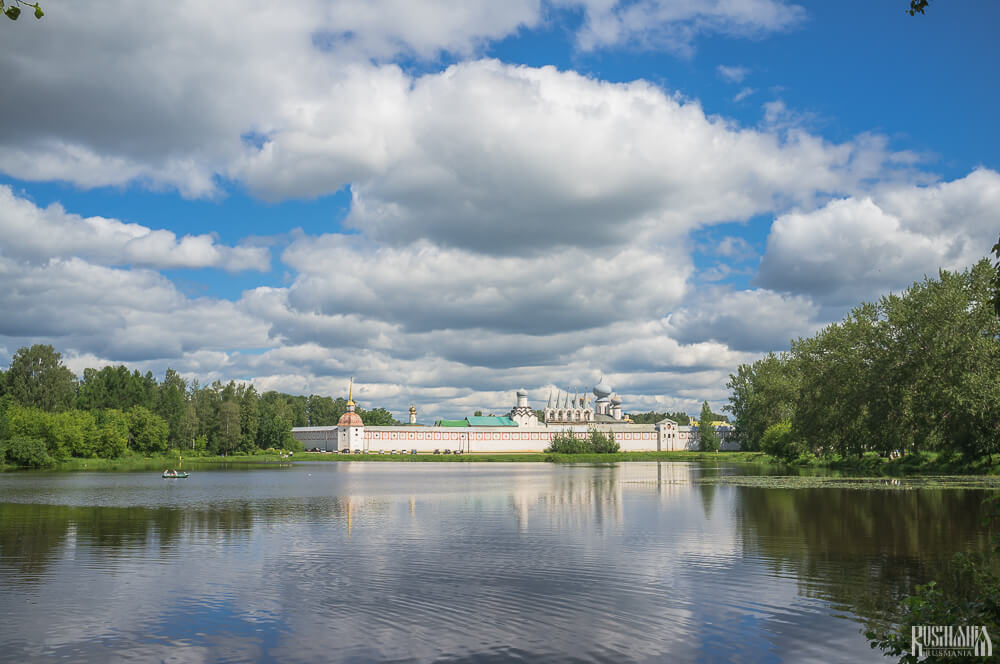
The Tikhvinsky Monastery was founded in 1560 on the orders of Ivan the Terrible and dedicated to the Dormition of the Virgin Mary. It was established around the Dormition Cathedral which was built in 1515 especially to hold the Our Lady of Tikhvin Icon, which is said to have been painted by St Luke the Evangelist and to have miraculously appeared in Russia in 1383, before the fall of Constantinople. During the Second World War it was briefly occupied by the Nazis and the icon was looted, firstly being taken to Pskov and then to Riga, from where it was taken to Chicago for safekeeping. After the monastery was reopened following the fall of the Soviet Union, the icon was returned.
Zelenetsky-Troitsky Monastery - Zelenets, Leningrad Region
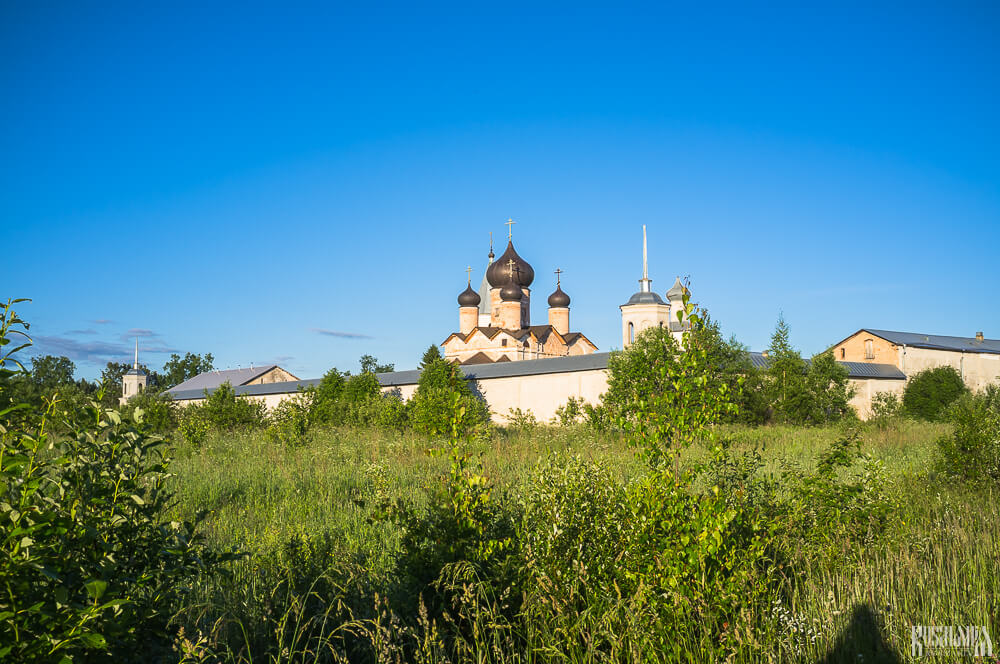
This monastery outside the village of Zelenets was founded in 1564 by the monk Martiry (St Martiry of Zelenets). It was later destroyed by the Swedes during the Time of Troubles, but subsequently refounded in the 1680s; its thick walls and most of its buildings date from this period.
Varlaamo-Khutynsky Monastery - Khutyn, Novgorod Region
One of the Novgorod Republic’s spiritual centres, this monastery was founded in 1192 by the revered hermit Varlaam, who was later canonised as St Varlaam of Khutyn. According to legend, in the 15th century Grand Prince Ivan III came to pray at St Varlaam’s shrine and requested his tomb be opened. When the lid of the grave was lifted fire appeared and the room was filled with smoke. Ivan III’s son Vasily III later ordered the reconstruction of the monastery’s Transfiguration of the Saviour Cathedral. It was completed in 1515 and survives to this day.
Spasso-Preobrazhensky Monastery - Staraya Russa, Novgorod Region
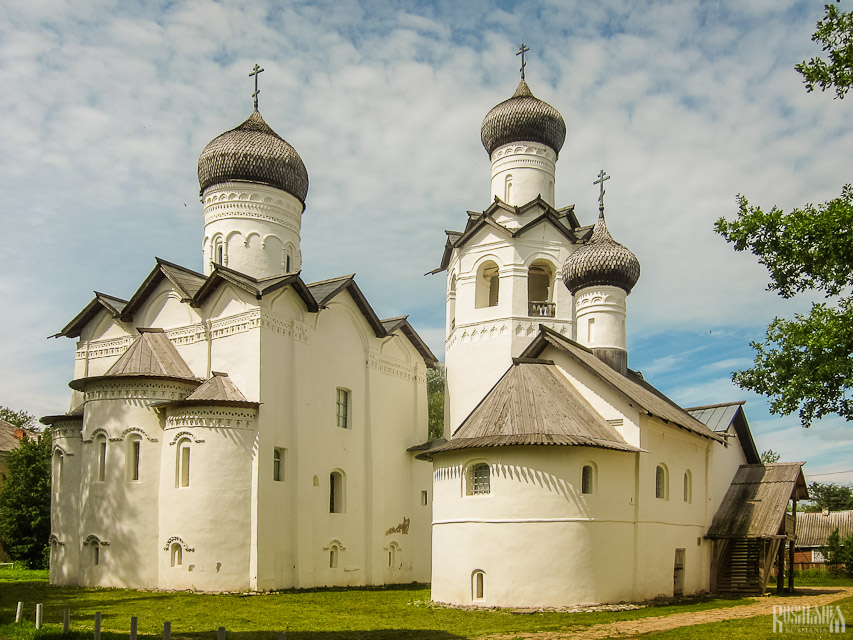
Staraya Russa’s monastery dedicated to the Transfiguration of the Saviour was founded in 1192 by Archbishop Grigory of Novgorod and Pskov, during the reign of Prince Yaroslav Vladimirovich of Novgorod. Its Transfiguration of the Saviour Cathedral dates from this period and was joined by another church and bell tower in the 17th century, and two further churches in the 19th century - one of which was especially built to hold the Our Lady of Staraya Russia Icon, which was returned to the monastery in 1888, having previously been taken to Tikhvin. Closed following the Revolution and heavily damaged during the war (it walls were completely destroyed), its surviving buildings were given over to be used by a regional museum, which remains here to this day. The original Our Lady of Staraya Russa Icon was lost during the war, but a copy is on display at the museum.
Valdaisky Iversky Monastery - Valdai, Novgorod Region
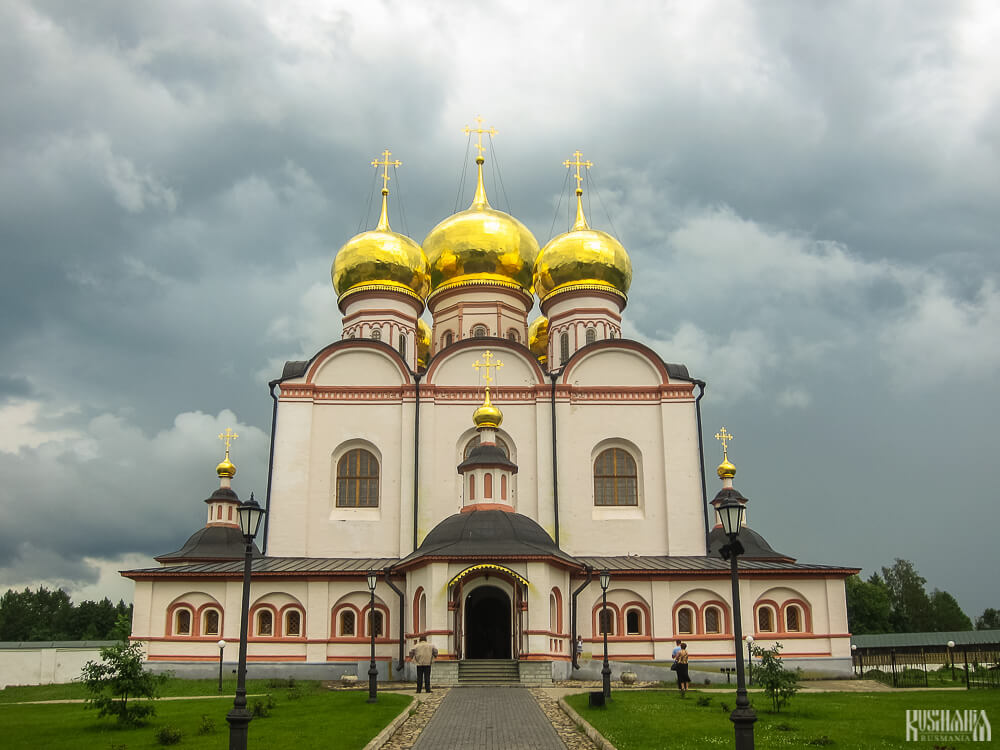
This monastery is one of three founded on the orders of Patriarch Nikon. Nikon’s idea was to recreate the Iveron Monastery of Mount Athos in Russia and in 1653 the Iversky Monastery was founded on his orders on an island in Lake Valdai. The monastery’s main cathedral - the Dormition Cathedral - was built between 1653 and 1655 and still stands to this day.
Yuriev Monastery - Veliky Novgorod, Novgorod Region
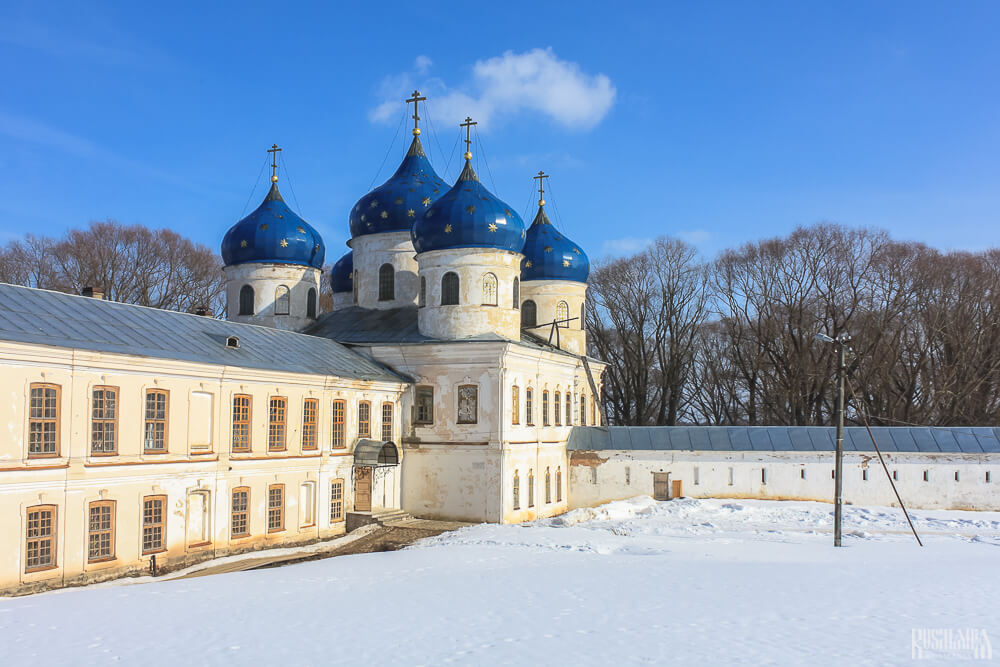
This monastery is widely considered to have been Russia’s first. It is believed to have been founded in 1030 by Prince Yaroslav the Wise. It was dedicated to St George - Yury being the Slavic equivalent of the name George. Its St George’s Cathedral was built between 1119 and 1130 on the orders of Prince Mstislav the Great of Novgorod. It still stands to this day making it one of the oldest cathedrals in the country.
Pskovo-Pechersky Monastery - Pechory, Pskov Region
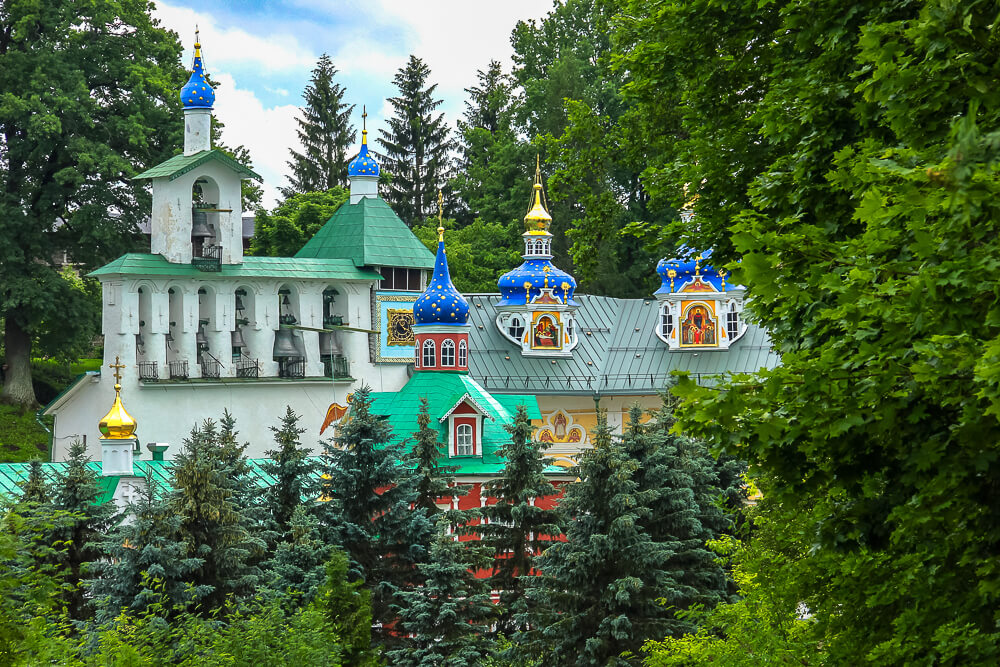
This monastery is also known as the Pskov-Cave Monastery and was founded in 1473 around caves where hermits had dug out monastic cells for themselves. In the mid-16th century the monastery was fortified with walls and towers to help defend Russia’s western border and in the subsequent centuries it was attacked by the Poles and the Swedes. An infamous event took place at the monastery in 1570 when Ivan the Terrible arrived here after his bloody campaign against Novgorod on the way to Pskov. Hegumen Kornili meet the party but was then killed for supposedly plotting against the tsar. It almost unique among Russian monasteries for remaining open throughout the Soviet period.
Mirozhsky Monastery - Pskov, Pskov Region

Named after the River Mirozha on which it was founded in approximately 1156 by Archbishop Nifont of Novgorod, this monastery is one of the oldest in Russia. What is almost miraculous is that not only does its mid-12th century Transfiguration of the Saviour Cathedral still stand to this day, but sections of its original frescoes have also survived. The cathedral remains a museum today, but the remaining territory has been returned to the Orthodox Church and reopened as a monastery.
Aleksandro-Nevskaya Lavra - St Petersburg

Shortly after founding his new capital of St Petersburg, in 1710 Peter the Great decided to establish a new monastery in the city dedicated to the mediaeval Russian hero, prince and saint Aleksandr Nevsky. In 1724 the actual relics of Nevsky were transferred from Vladimir’s Bogoroditse-Rozhdestvensky Monastery to the new monastery. In 1797 Emperor Paul granted the monastery the status of a lavra, making it equal to the Troitse-Sergieva Lavra. Located outside the lavra are necropolises where some of Russia’s greatest cultural icons have been laid to rest.
Smolny Convent - St Petersburg

St Petersburg’s Smolny Convent was founded in 1744 by Empress Elizabeth, who even considered retiring there. Elizabeth employed her favourite architect Bartolomeo Rastrelli to construct a wonderful baroque style cathedral and surrounding buildings for her new convent, which still stand today. However the convent ceased to function back in 1764, when Empress Catherine the Great had it turned into a school for noble girls. The cathedral was only returned to the Russian Orthodox Church in 2015, previous to this it was used as a concert hall.
Ferapontov Monastery - Ferapontovo, Vologda Region
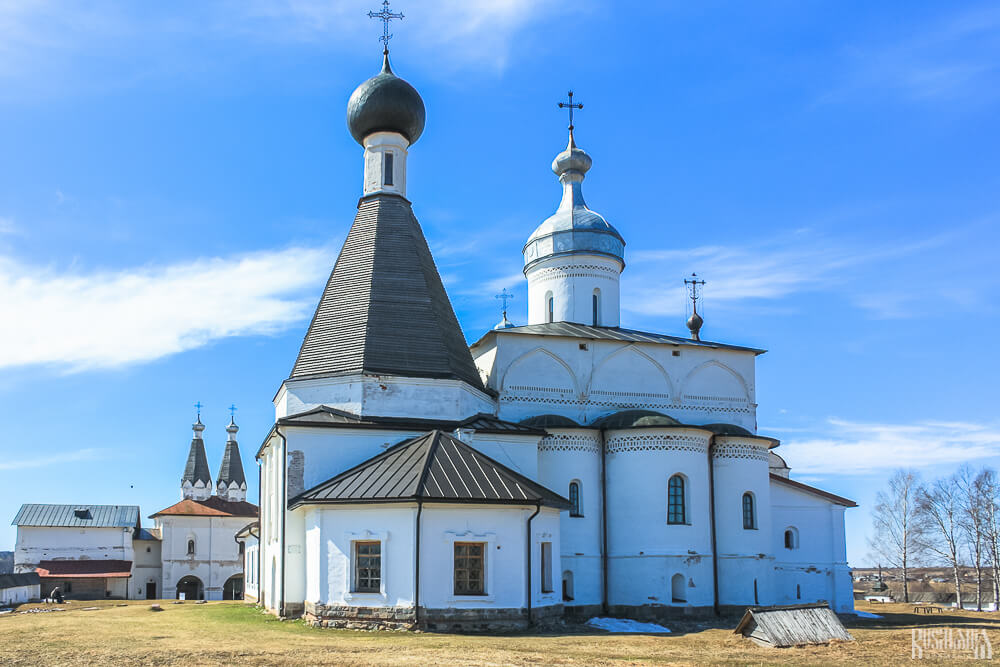
Having come to the Russian North with his fellow monk and monastery-founder Kirill (later canonised as St Cyril of Belozersk), in 1398 the monk Ferapont (St Ferapont of Belozersk) founded what is now the Ferapontov Monastery on a hill between two lakes. Ferapont’s monastery was much smaller that the one Kirill founded nearby, but the main cathedral here - the Nativity of the Virgin Mary Cathedral - boasts early 16th century frescoes by acclaimed Russian icon-painter Dionisius; for which the monastery was granted UNESCO-protection. Today the monastery remains a museum.
Voskresensky Goritsy Convent - Goritsy, Vologda Region
The Goritsy convent was founded in 1544 by Yefrosinya of Staritsa - the widow of Prince Andrey of Staritsa, Ivan the Terrible’s uncle. Yefrosinya was exiled to the convent she founded in 1563 and she was eventually murdered at the convent on the orders of Ivan the Terrible in 1569 following her son’s fall from power. At the same time, the widow of Ivan the Terrible’s brother was also murdered here. Ivan’s fourth wife was also exiled to the convent in 1575, however she later died a natural death in Tikhvin. Most of the convent’s buildings date from the 19th century and it looks especially beautiful viewed from the River Sheksna.
Kirillo-Belozersky Monastery - Kirillov, Vologda Region
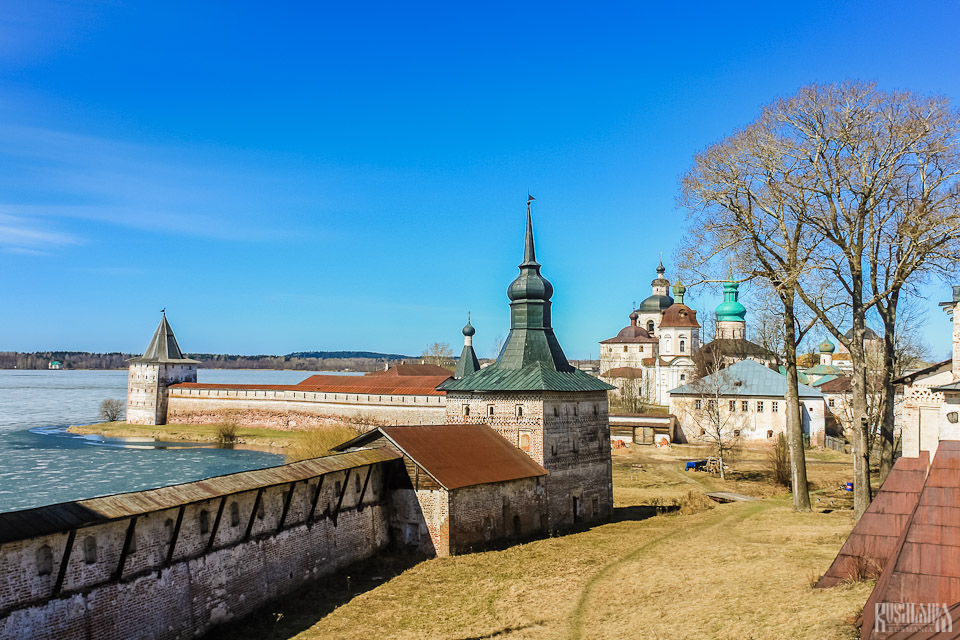
Founded in 1397 by St Cyril (Kirill) of Belozersk on Lake Siverskoe, this massive complex, one of the largest in Russia, is one of the best preserved examples of a Russian fortified monastery, with 732 metres of wall seven metres thick. As well as being a major and significant religious centre of the Russian North, it was alaso a favourite place of pilgrimage for Grand Prince Vasily III and Tsar Ivan the Terrible, who donated funds for construction work. Today its territory is shared between the monastery and a museum-reserve.
Spaso-Prilutsky Monastery - Vologda, Vologda Region

On the outskirts of Vologda is the Spaso-Prilutsky Monastery which was founded in 1371 by St Demetrius (Dimitri) of Priluki. During the Time of Troubles the monastery was sacked by the Polish and Lithuanians, but this was followed by restoration work that resulted in the monastery being fortified with strong walls and towers in the mid-17th century. One of the towers was decorated with stripes that have now become a prominent feature.
VOLGA FEDERAL DISTRICT
Serafimo-Diveevsky Convent - Diveevo, Nizhny Novgorod Region
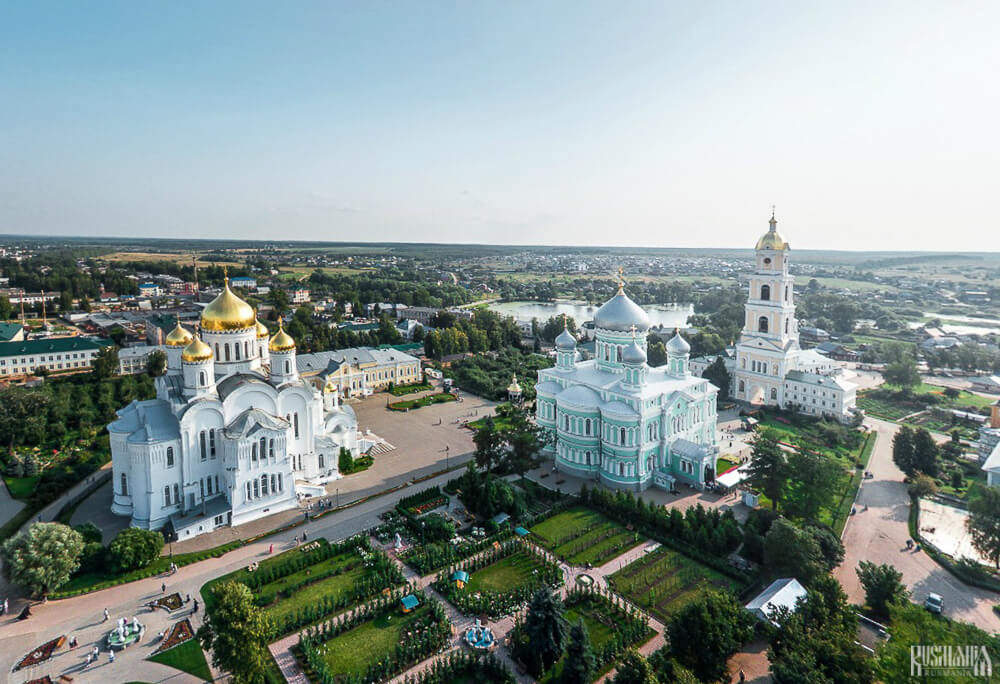
Today the Serafimo-Diveevsky Convent is one of the most popular sites of pilgrimage in Russia thanks to its association with the popular St Seraphim of Sarov. It started out as a religious commune set up in the mid-18th century by a rich widow-turned-nun who had a vision of the Virgin Mary telling her to found a community. It officially became a convent in 1861. Pilgrims come here to pray at the shrine of St Seraphim (his relics were rediscovered in 1991 in St Petersburg’s Museum of Atheism), walk along the “Holy Channel” - a trench for meditation and prayer, or worship at the convent’s four cathedrals.
Zheltovodsky Makariev Convent - Makarievo, Nizhny Novgorod Region
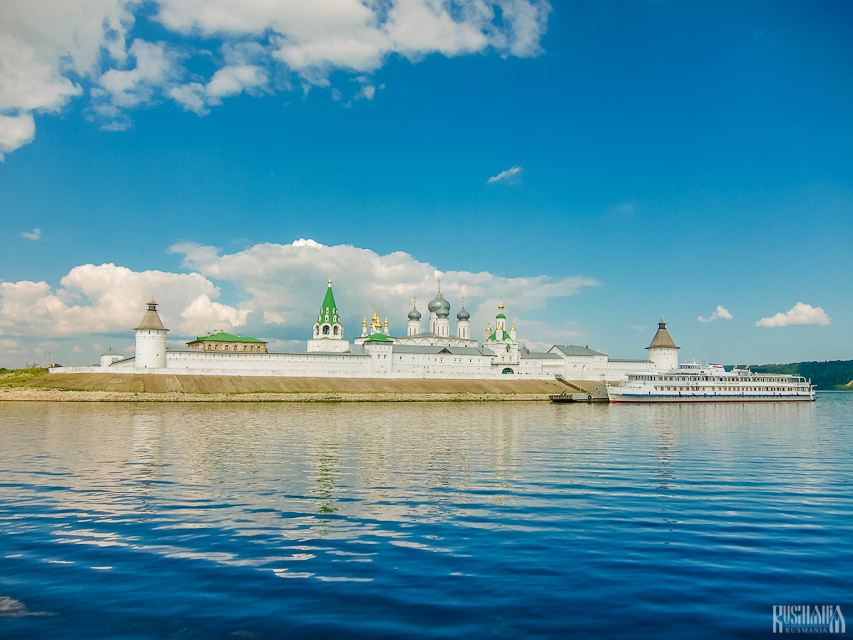
The Zheltovodsky Makariev Convent was founded as a monastery close to the River Volga by St Macarius (Makary) of Zheltovodsky in approximately 1434. It was razed to the ground several years later in 1439 by the Kazan Tatars and Macarius was taken prisoner. He was later released and went on to found another monastery, but it was only in 1620 that his first monastery was reestablished. Most of its buildings and its large walls date from the mid-17th century, around the same time that the famous Makariev Fair began being held outside, which eventually moved to Nizhny Novgorod in 1816.
Pechersky Voznesensky Monastery - Nizhny Novgorod, Nizhny Novgorod Region
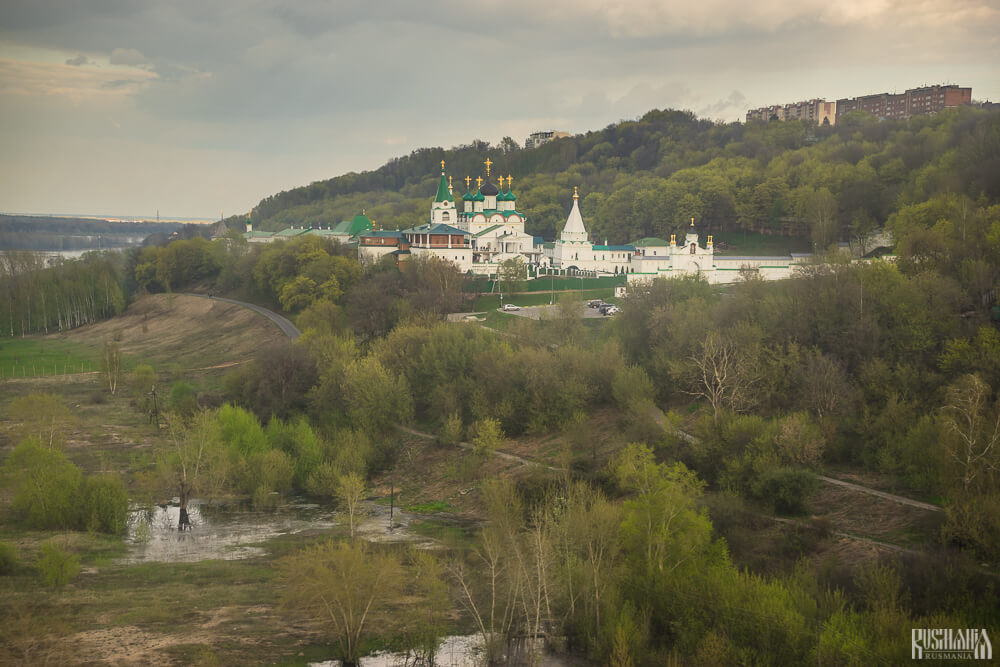
This monastery was founded in 1328 by a monk called Dionisy who left the Kievo-Percherskaya Lavra and settled outside Nizhny Novgorod and dug caves on a steep shore of the Volga and established a church dedicated to the Ascension of the Lord. The name Pechersky translates as cave and Voznesensky as ascension.
Troitse-Skanov Convent - Narovchat, Penza Region
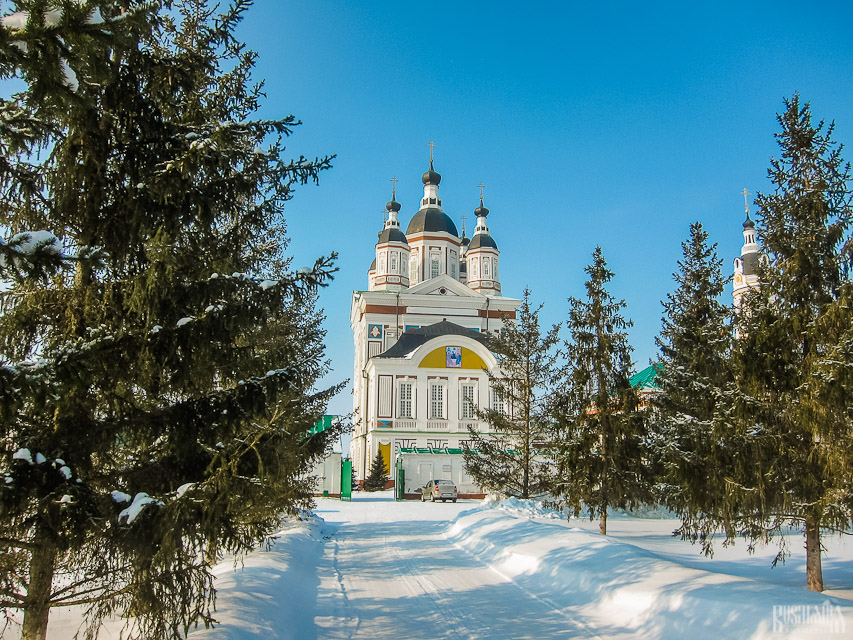
This convent has two main attractions: its late-18th century baroque cathedral and the nearby system of caves which were turned into monastic cells and churches. It was founded in the mid-17th century as a monastery, with the caves first being used in 1826 when a hermit from the monastery relocated there. The monastery became a convent upon reopening after the Soviet period.
Raifsky Bogoroditsky Monastery - Raifa, Republic of Tatarstan
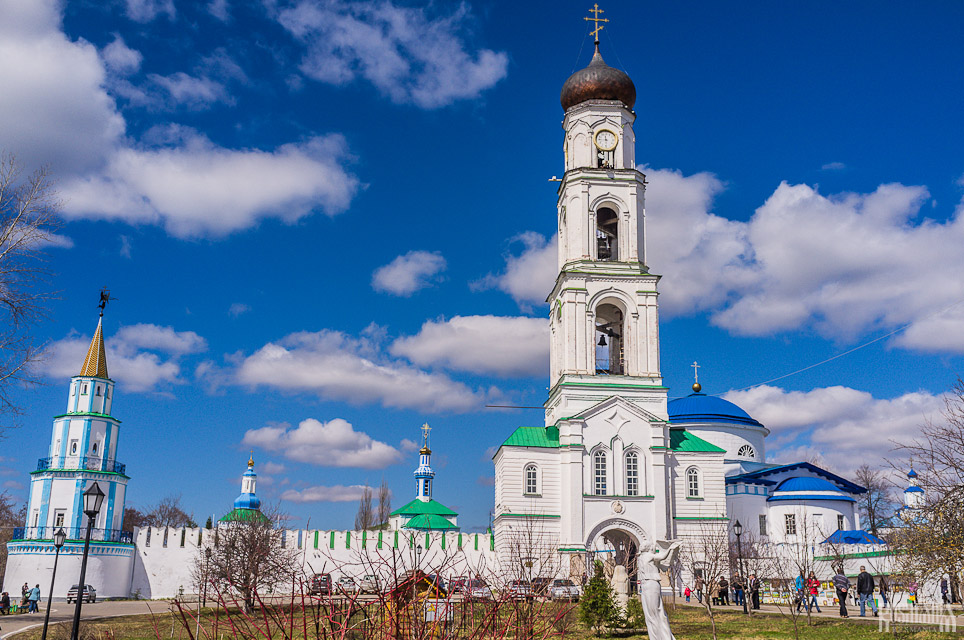
The Raifsky Bogoroditsky Monastery is the largest Orthodox monastery in Tatarstan - a republic more often associated with its beautiful mosques, than Orthodox sites. It was founded in 1613 when a hermit called Filaret built a monastic cell for himself on the banks of a lake. The community of monks which developed here was then officially granted the status of a monastery in 1661 and new stone buildings were built in the early 18th century after fire completely destroyed the wooden monastery. The monastery was forcibly closed in 1918 among some bloodshed and was later turned into a prison camp for political prisoners and young offenders.
Bogoroditse-Uspensky Monastery - Sviyazhsk, Republic of Tatarstan
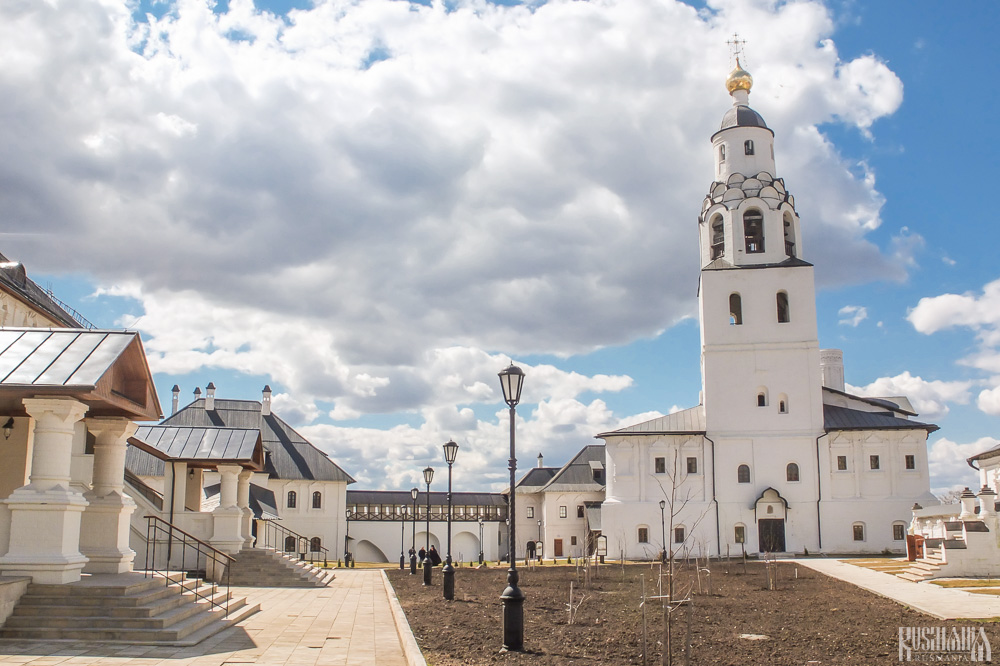
The relatively small island of Sviyazhsk actually has two monasteries, but the more impressive and oldest one is the Bogoroditse-Uspensky Monastery. It was founded in 1555 mainly for missionary work to convert the various peoples of the newly conquered Kazan Khanate to Orthodoxy. Its first archimandrite was the monk German who was later canonised as St German. After dying in Moscow, most likely at the hands of the Oprichniki, St German’s relics were later returned to the monastery in 1592 and his tomb became its most sacred shrine. In 2017 the monastery was entered on the UNESCO World Heritage List.
URALS FEDERAL DISTRICT
Tsarist Passion Bearers Monastery - Ganina Yama, Sverdlovsk Region
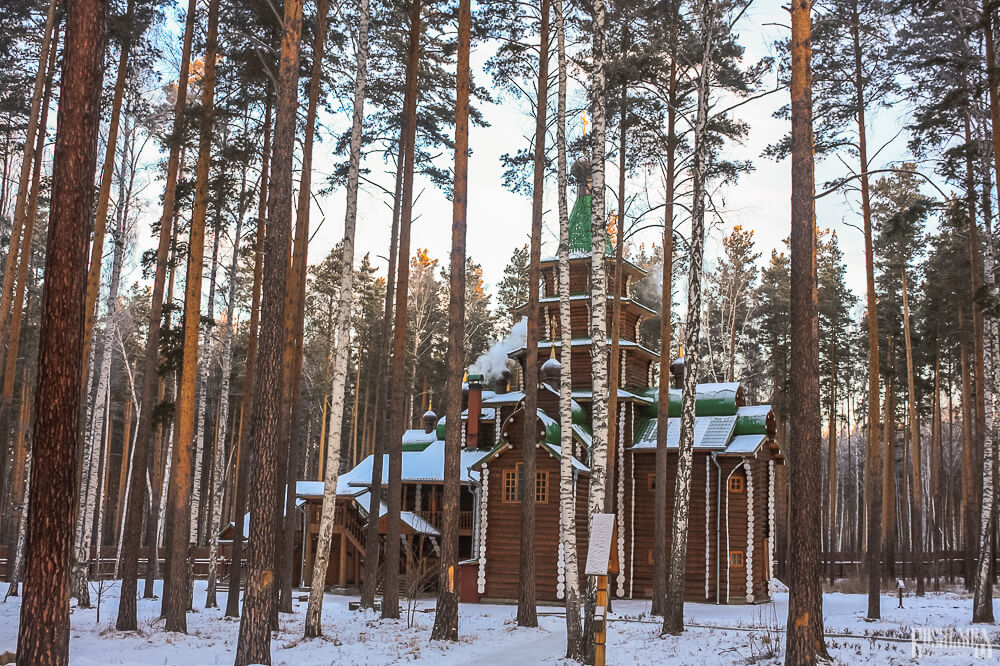
This monastery is the newest on our list, having been founded in 2000, and has been included for its connection with the fall of the House of Romanov, rather than for its architectural value or ancient history. The monastery was founded on the site of the Ganina Yama mines where the bodies of Russia’s last imperial family were originally dumped. Attempts to cremate the remains were unsuccessful and as the site did not remain a secret, on the next day the Bolsheviks returned and transferred the bodies to a new site where they were eventually discovered decades later. The monastery today has seven wooden churches - one for each member of the family killed.
Svyato-Nikolaevsky Monastery - Verkhoturye, Sverdlovsk Region
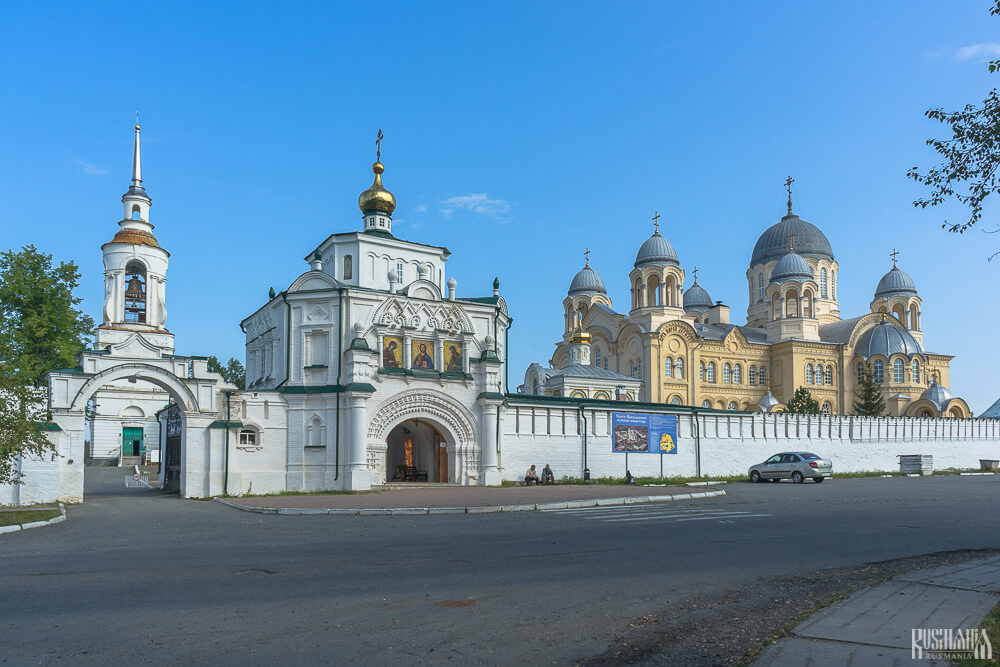
Often referred to as the the Ural’s holiest place, Verkhoturye’s Svyato-Nikolaevsky Monastery was founded in 1604 by the monk Iona on a hill next to the River Kalachik. It is one of the largest monasteries in Russia and in territory it exceeds that of the Moscow Kremlin. In 1704 the relics of St Simeon of Verkhoturye were transferred to the monastery from the village of Merkushino. The monastery’s main cathedral is the massive and eclectic Exaltation of the Cross Cathedral and was built between 1905 and 1913 especially for the 300th anniversary of the House of Romanov. Another connection with the Romanovs is that Rasputin made a pilgrimage to this monastery before heading to St Petersburg. The pilgrimage is said to have had a profound effect on the “Mad Monk”.
Alapaevsky New Martyrs of Russia Monastery - Sinyachikha, Sverdlovsk Region
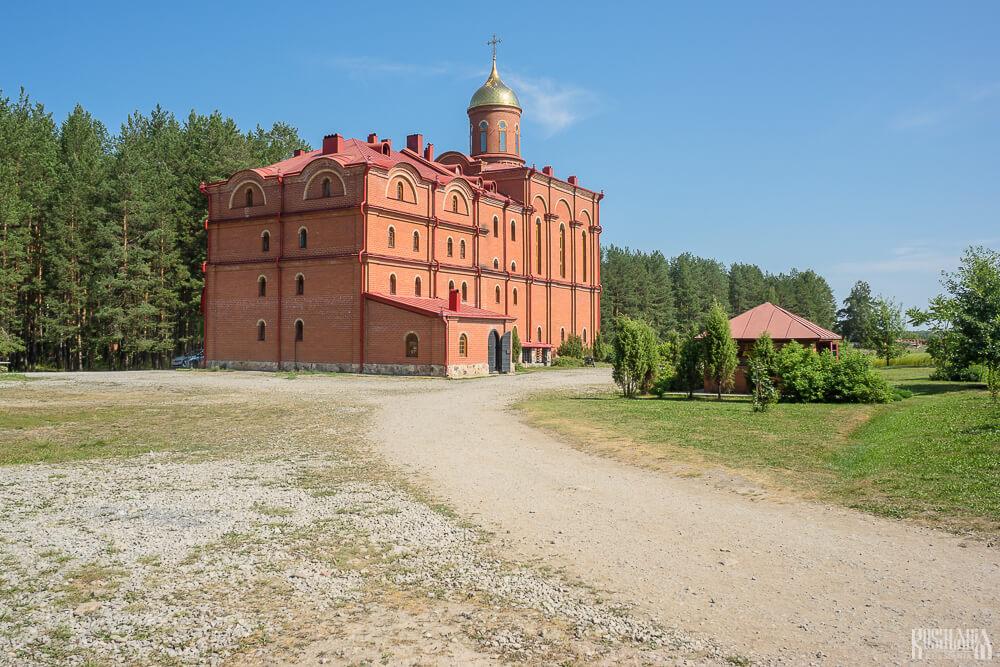
Like the Tsarist Passion Bearers Monastery, we have included this monastery not because of its age or because of its architecture, but because of its connection with a tragic event of the 20th century. The monastery was founded in 1995 just outside the city of Alapaevsk at the site of the murder of several members of the Russian royal family, who were thrown down a mine, most alive at the time. Eight people were murdered here on 18 June 1918, including Grand Duchess Elizaveta Fyodorovna (Empress Alexandra’s sister). The opening of mineshaft has now been covered and turned into a memorial.
SIBERIAN FEDERAL DISTRICT
Znamensky Convent- Irkutsk, Irkutsk Region
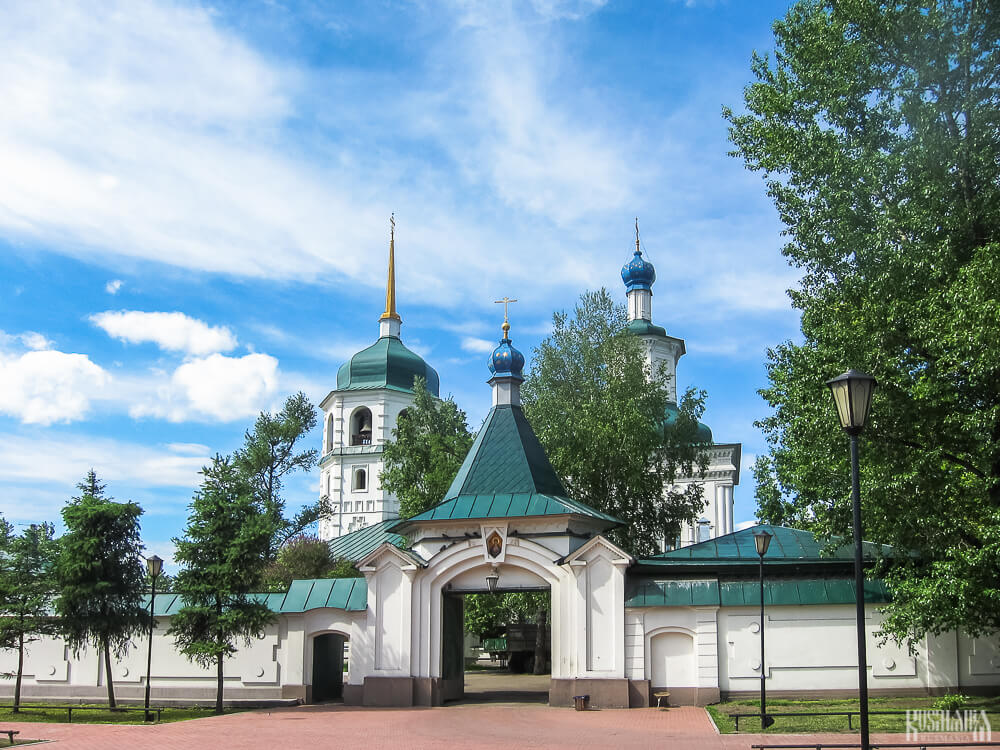
Irkutsk’s Znamensky Convent is dedicated to the icon known as the Our Lady of the Sign (Znamenie in Russian). It was founded on the right-bank of the River Angara in 1689, making it one of the oldest convents in Siberia. The convent became caught up in the events of the Russian Civil War as Admiral Aleksandr Kolchak, a leading figure of the Whites, was executed by the Bolsheviks outside the walls of the convent in 1920.
Abalakskaya Znamensky Hermitage - Abalak, Tyumen Region
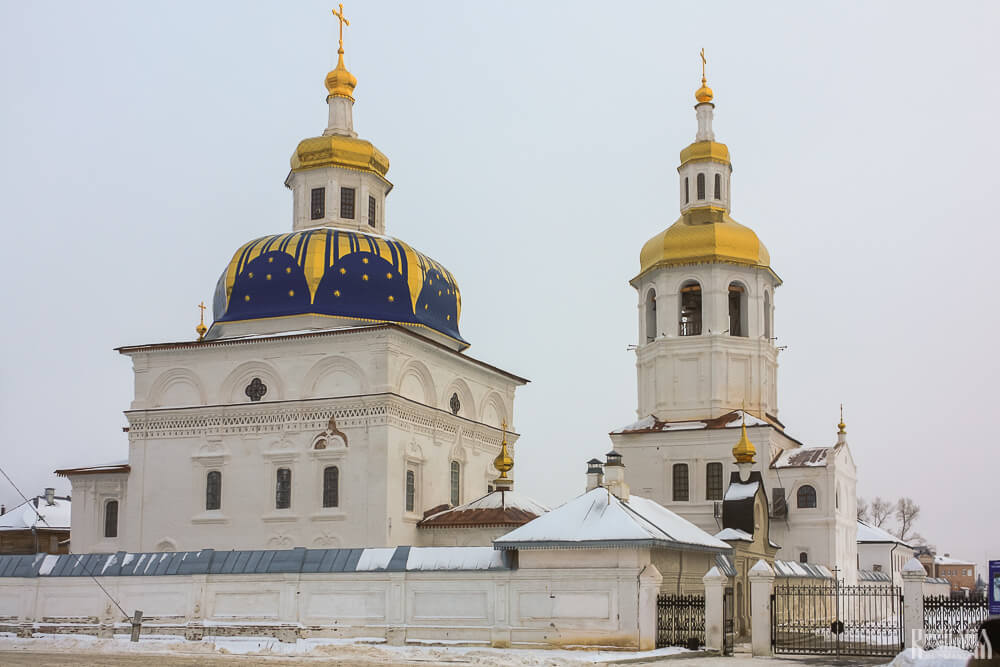
This monastery, also dedicated to the Our Lady of the Sign Icon, was founded in 1785 on the initiative of Bishop Varlaam of Tobolsk and Siberia. Previously a wooden church was situated here which was built to hold the Our Lady of Abalak Icon. The icon is said to have miraculously appeared to a widow in 1636. Today only a copy of the icon survives, which can be found at the monastery; it is considered the most revered icon in Siberia.
► Russia in lists ► List of most important monasteries in Russia

